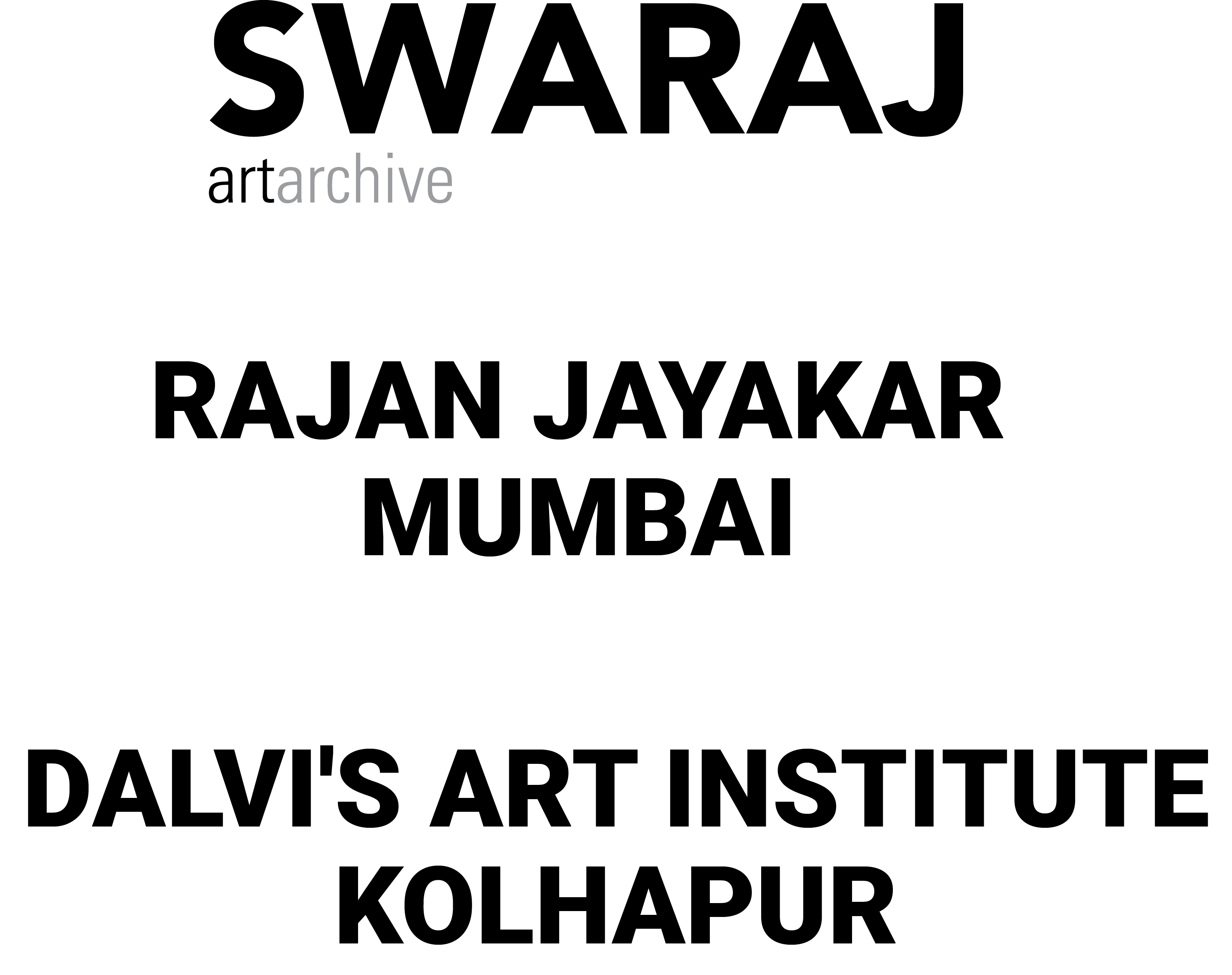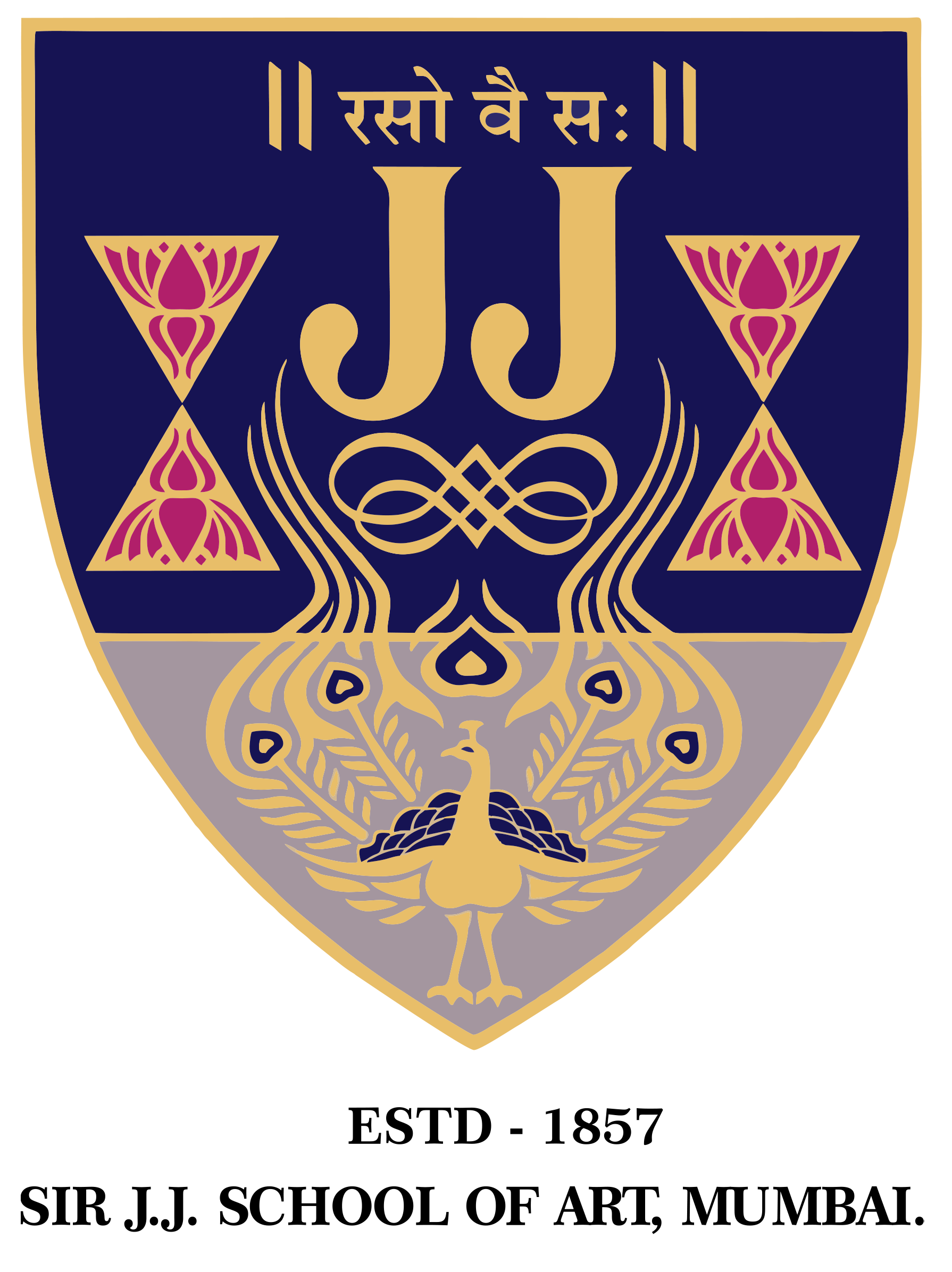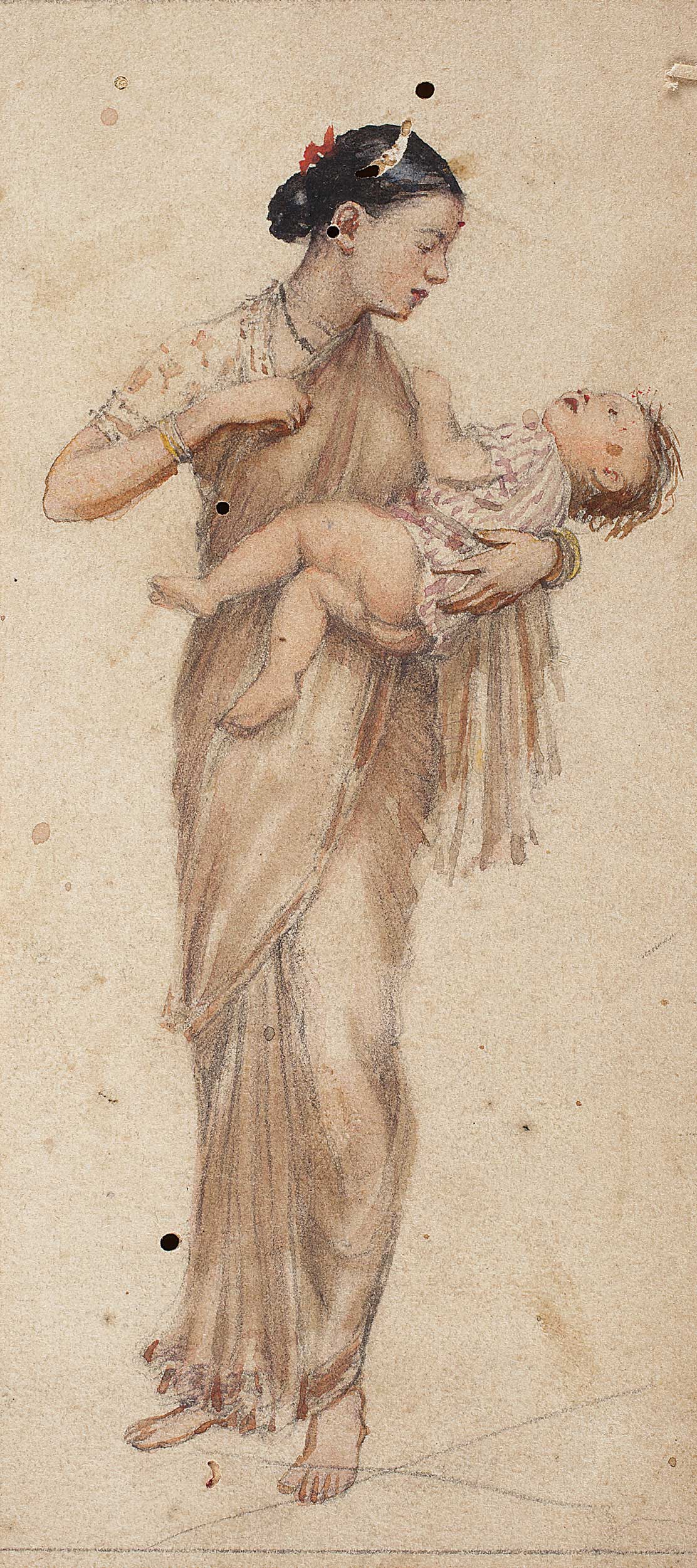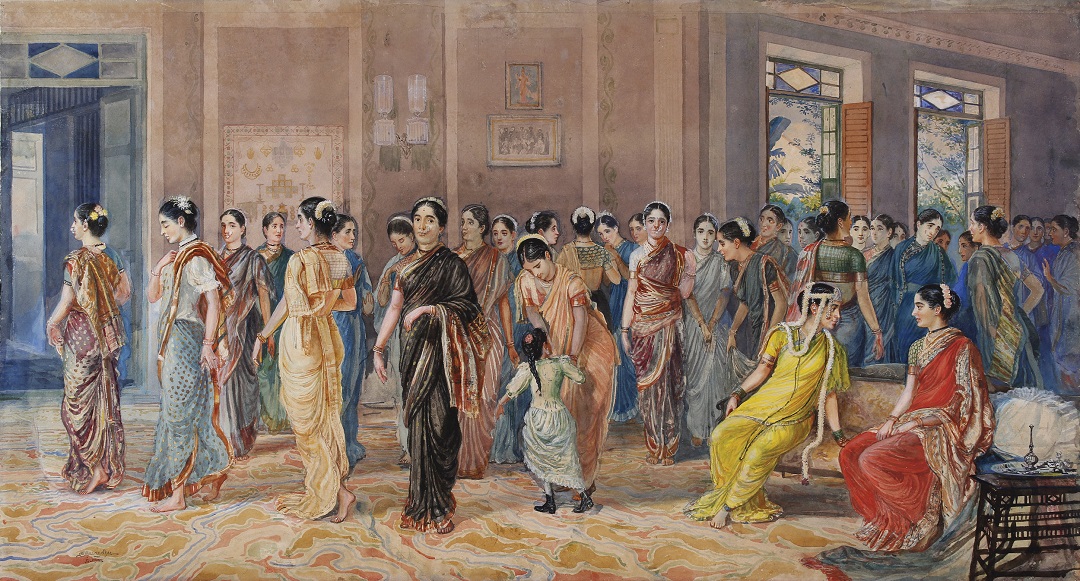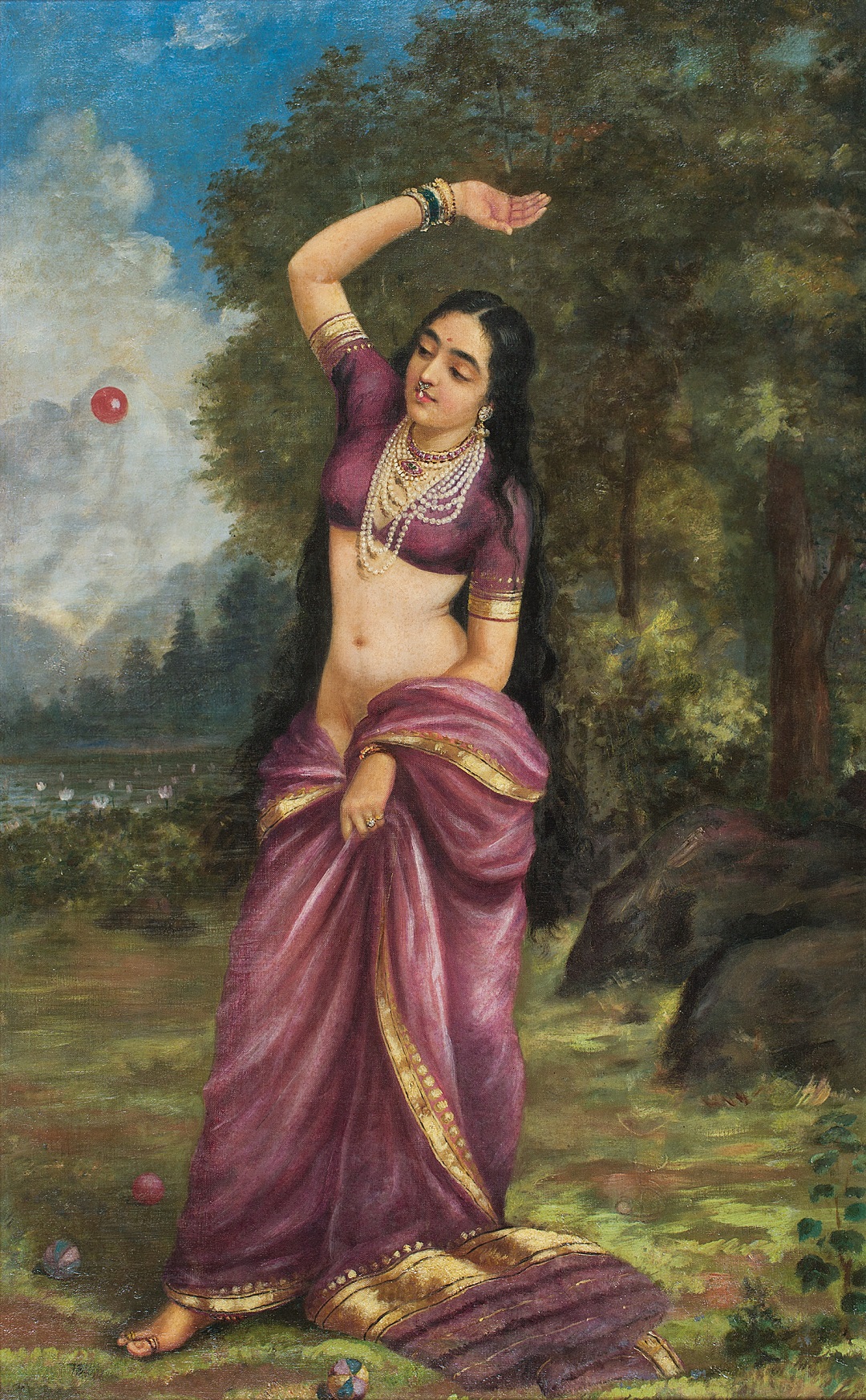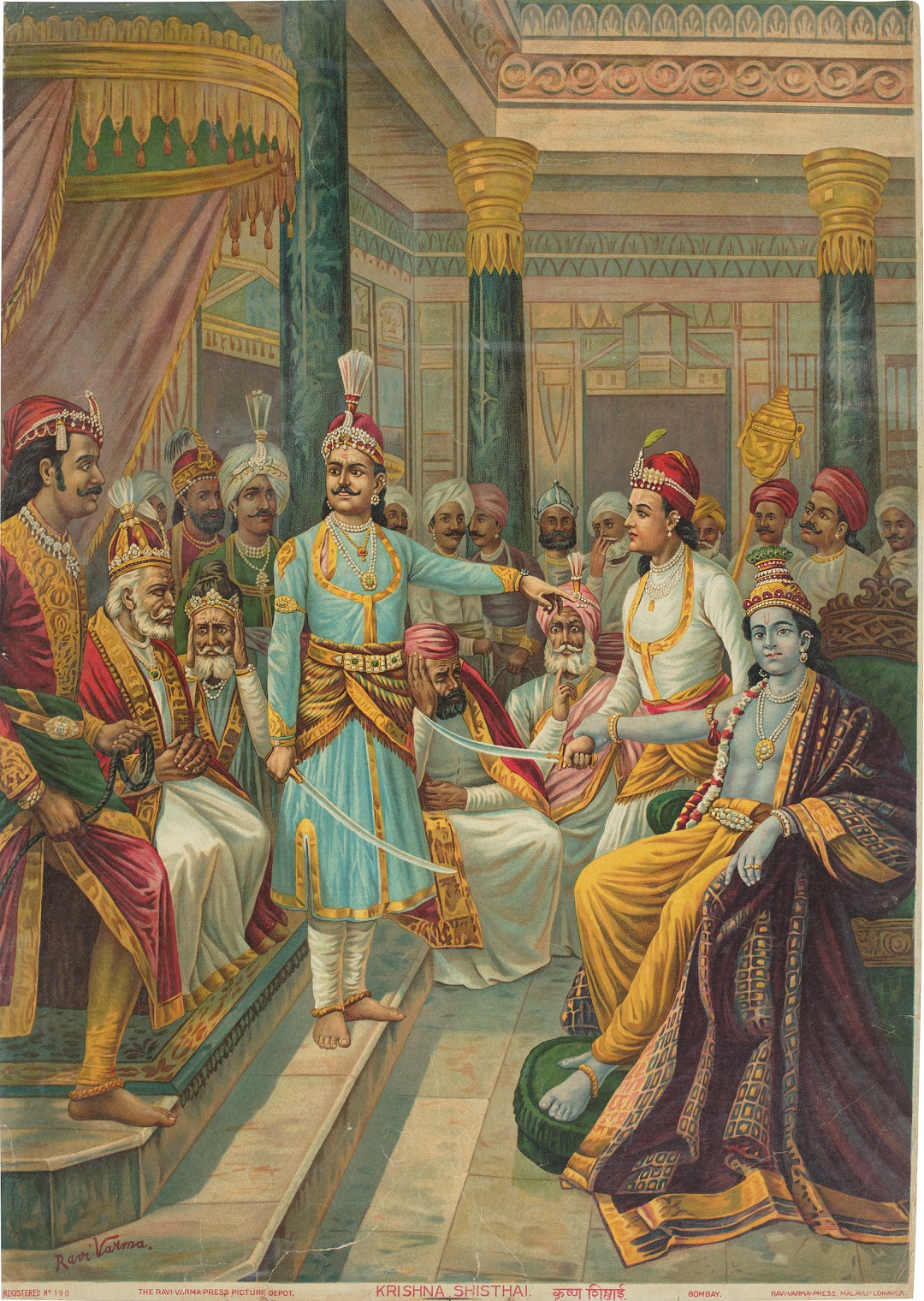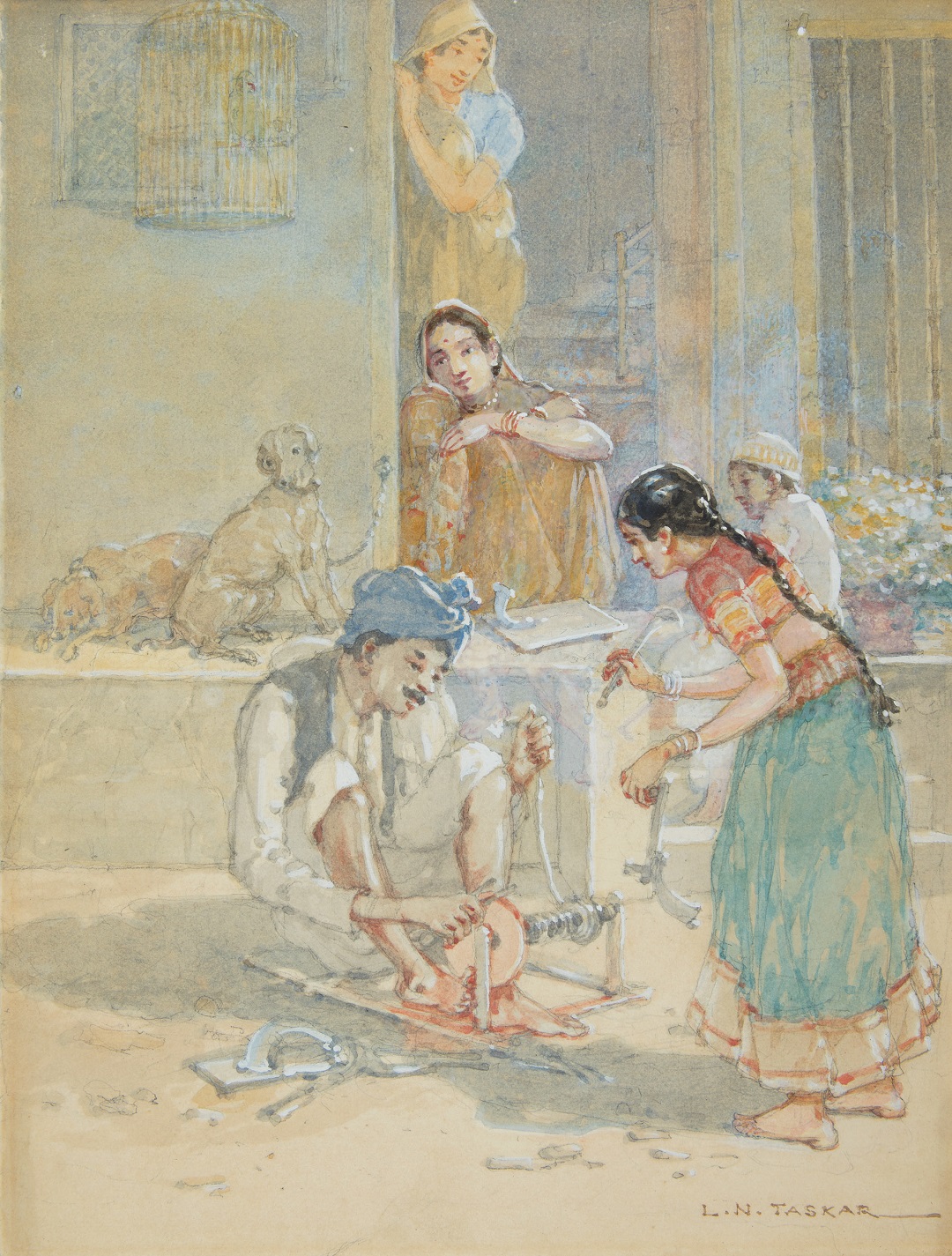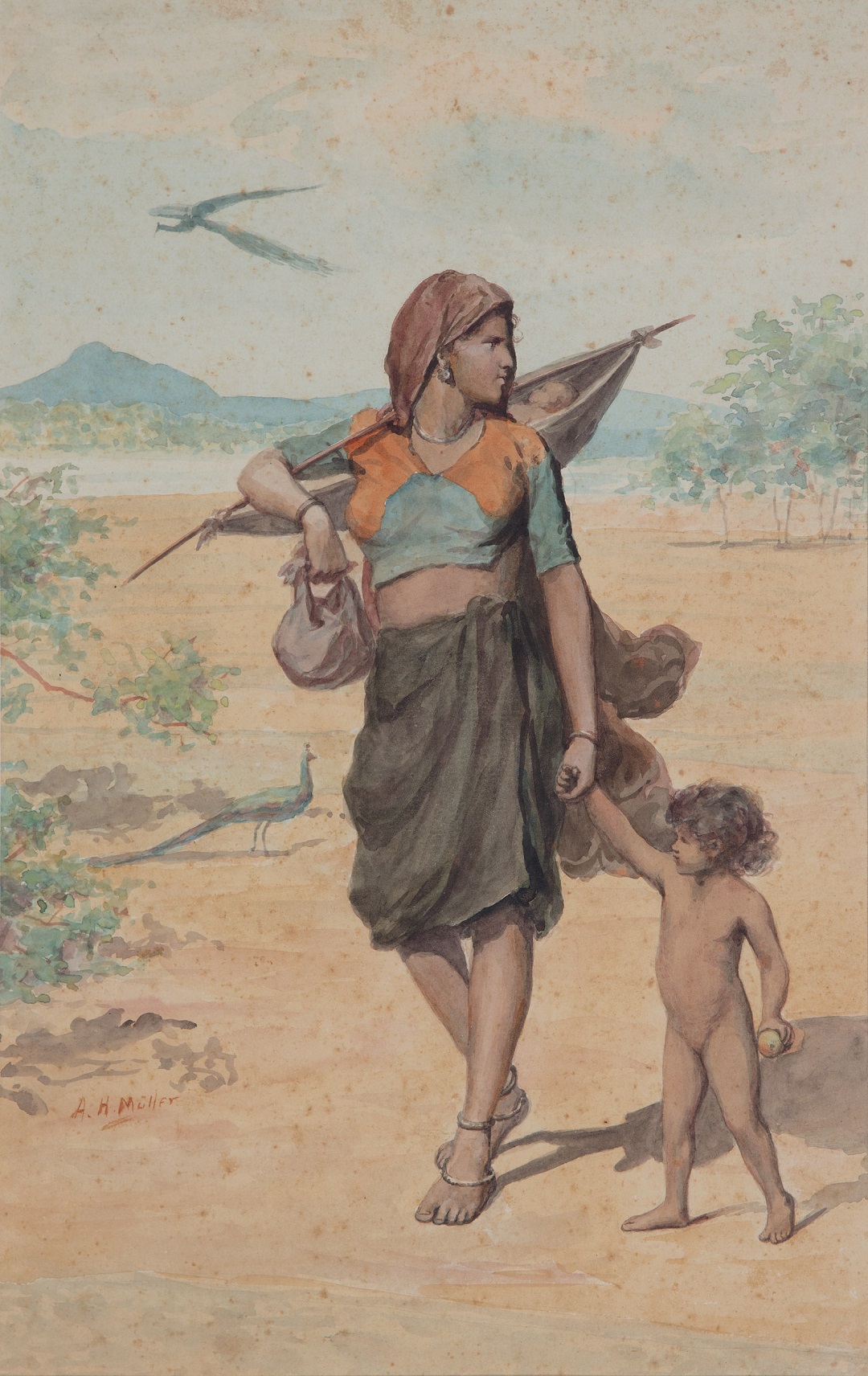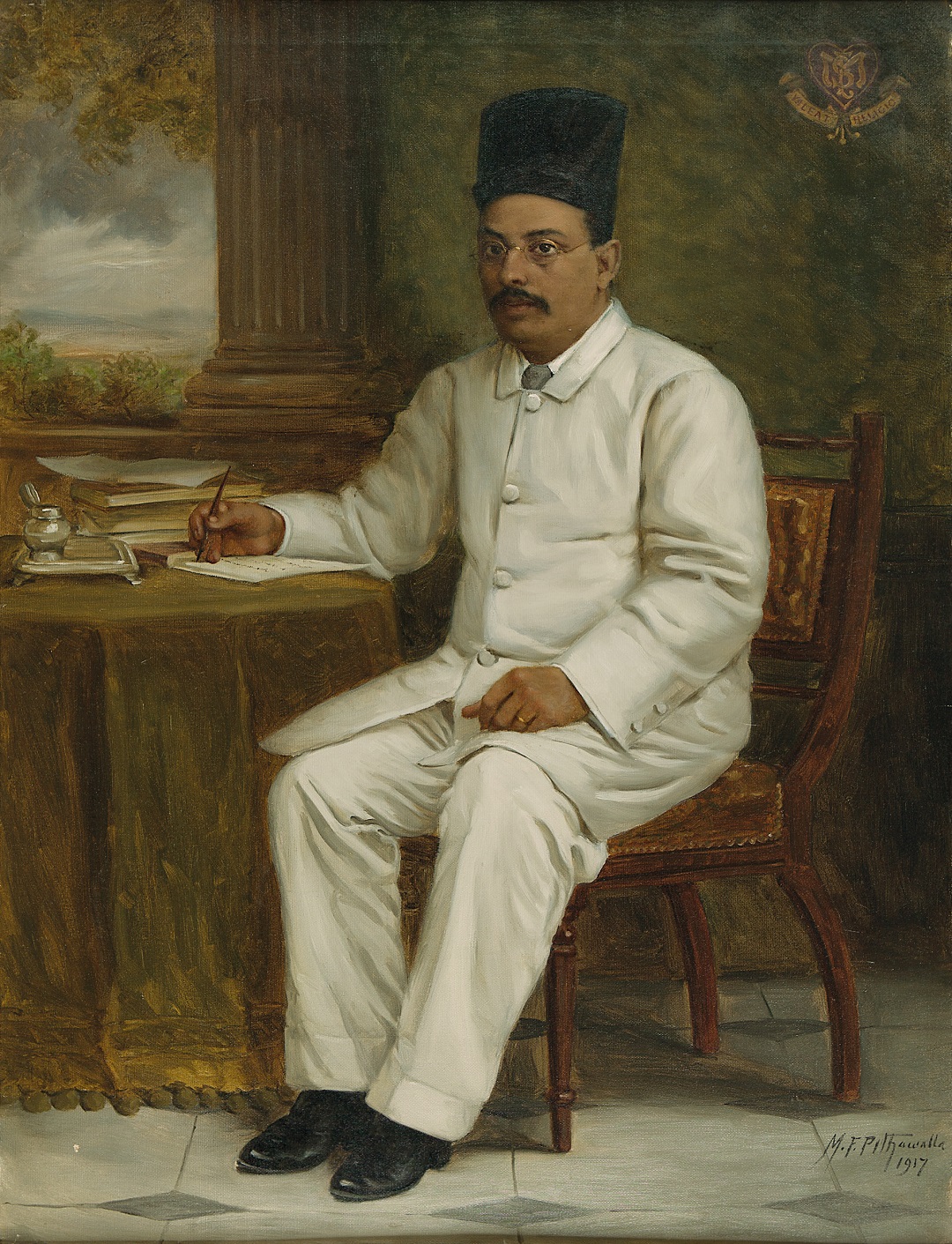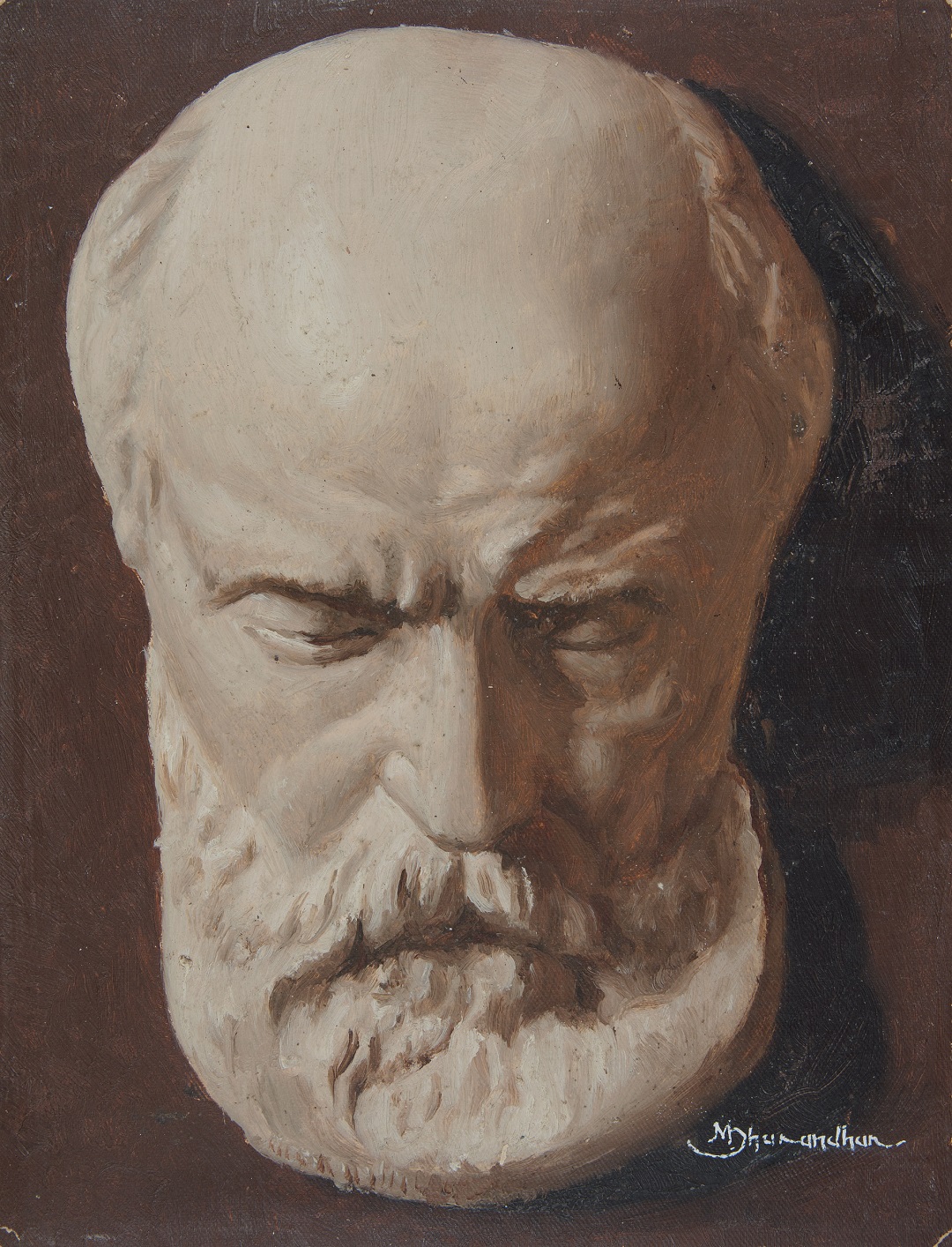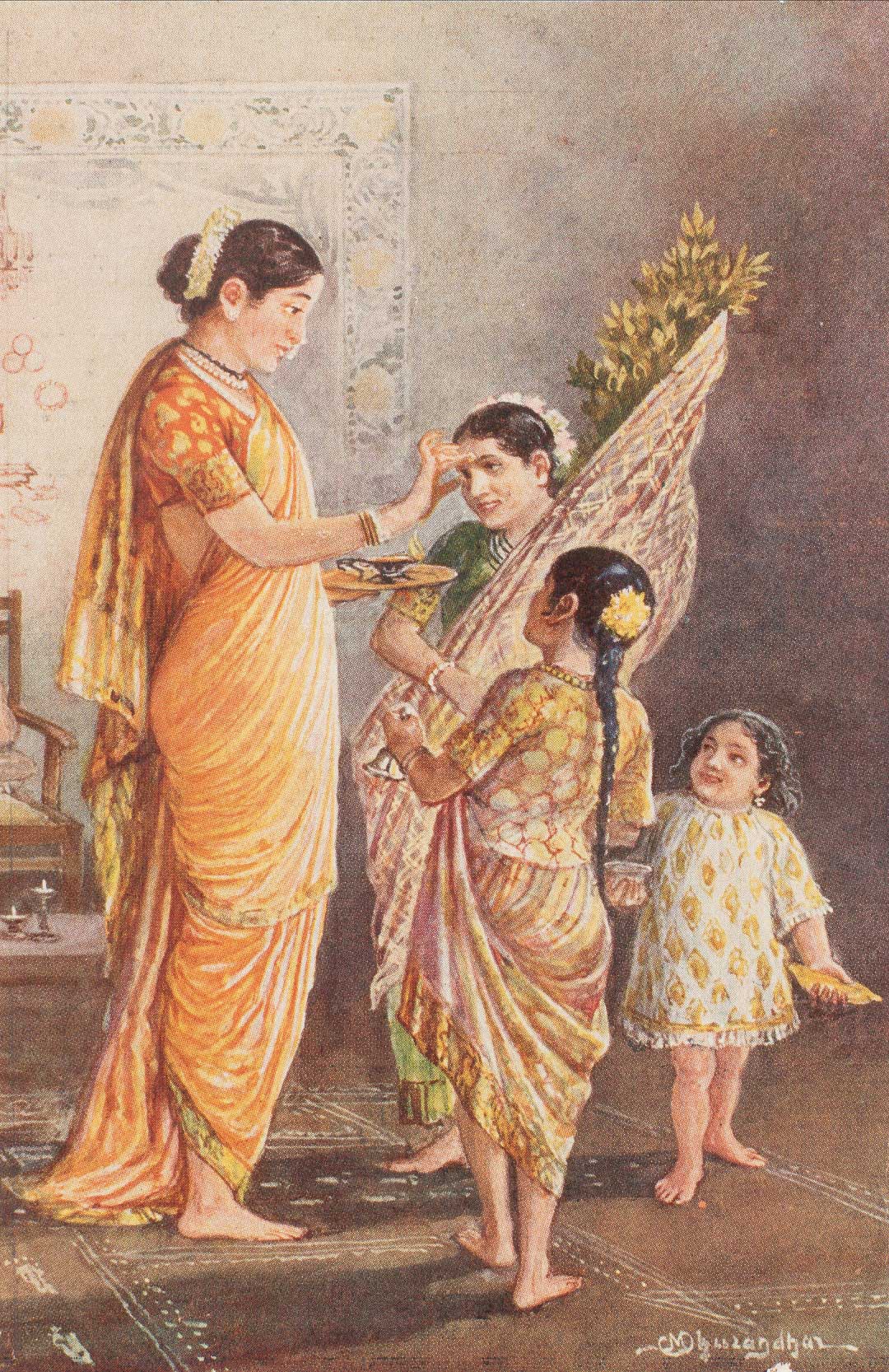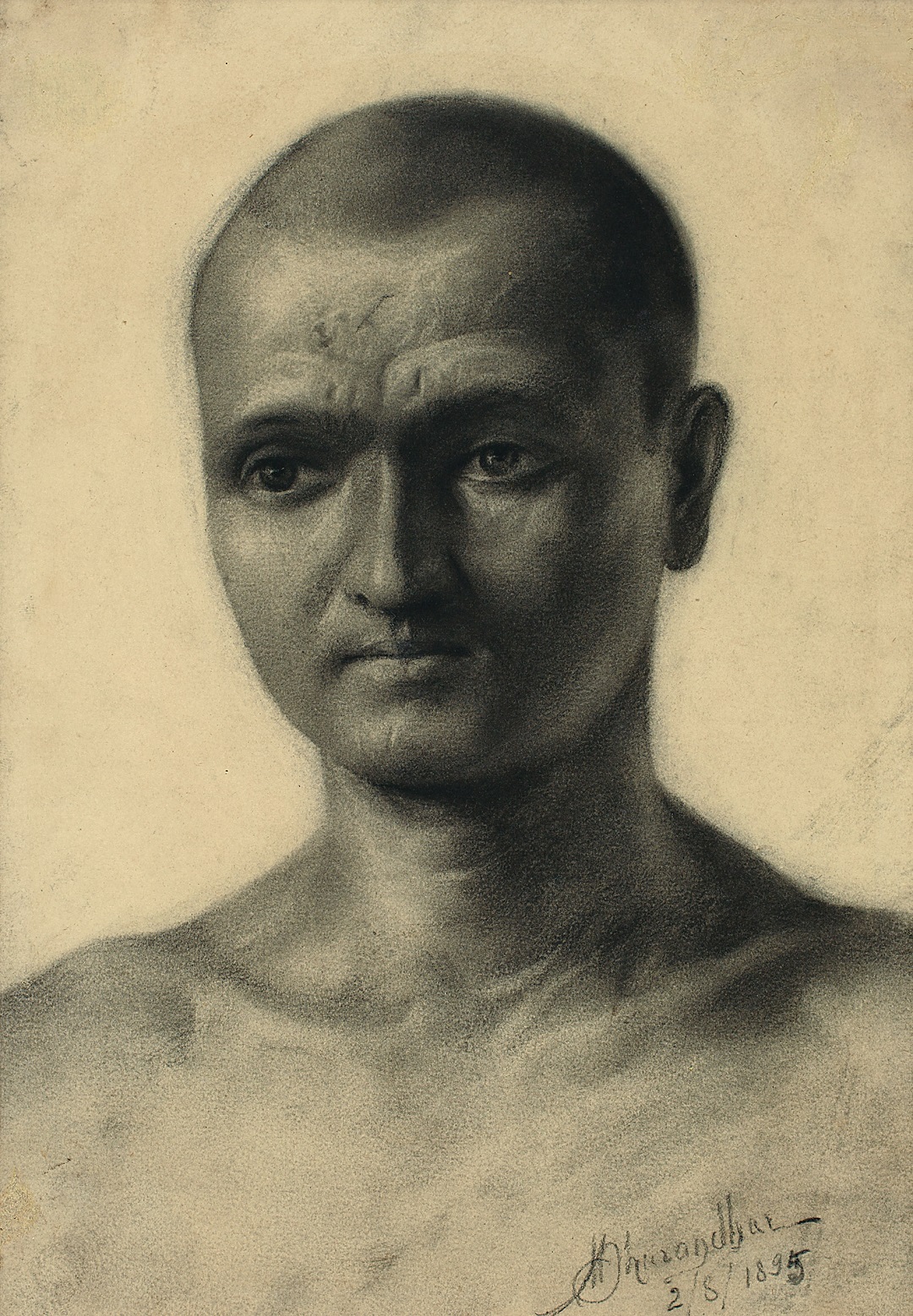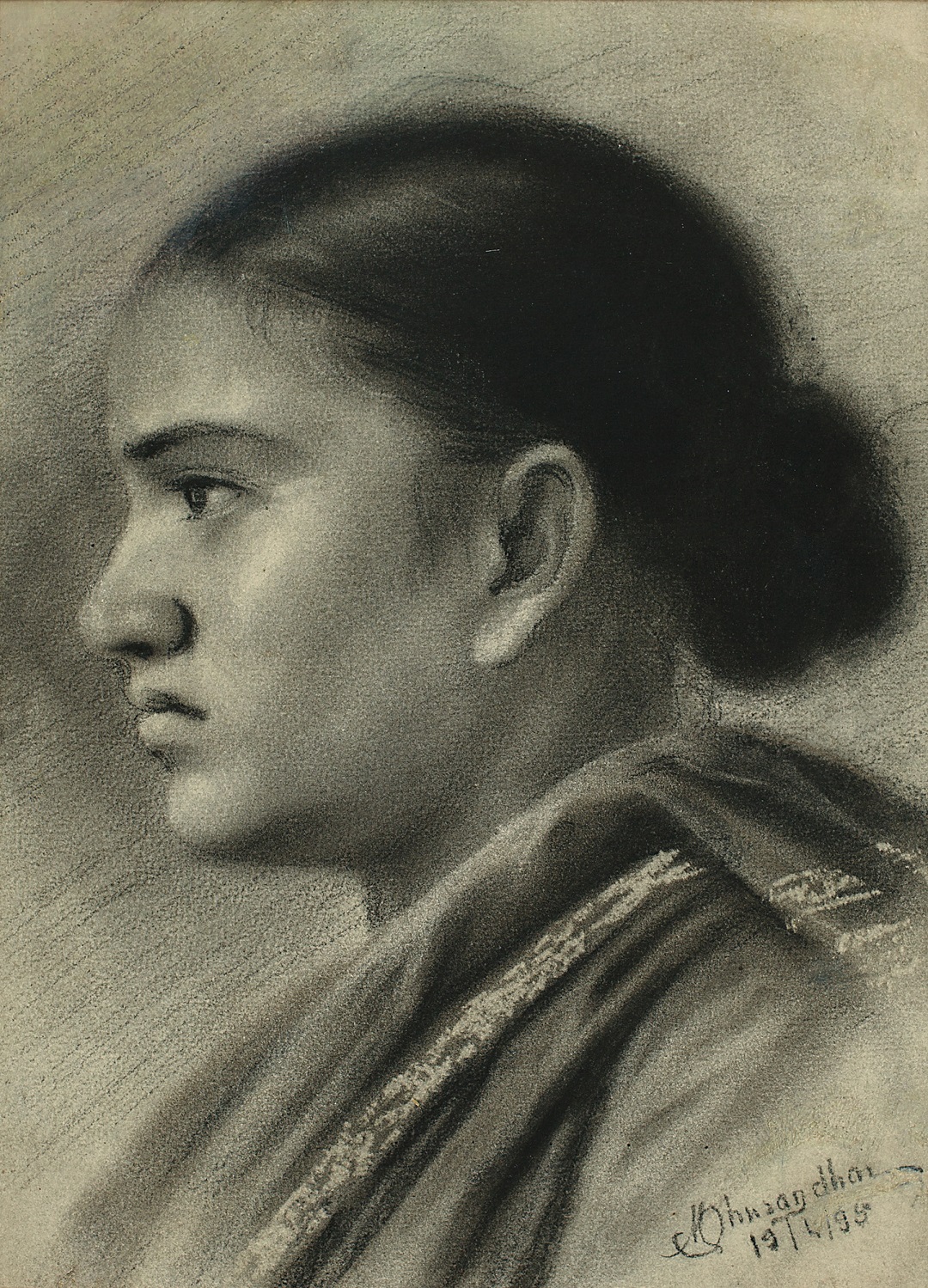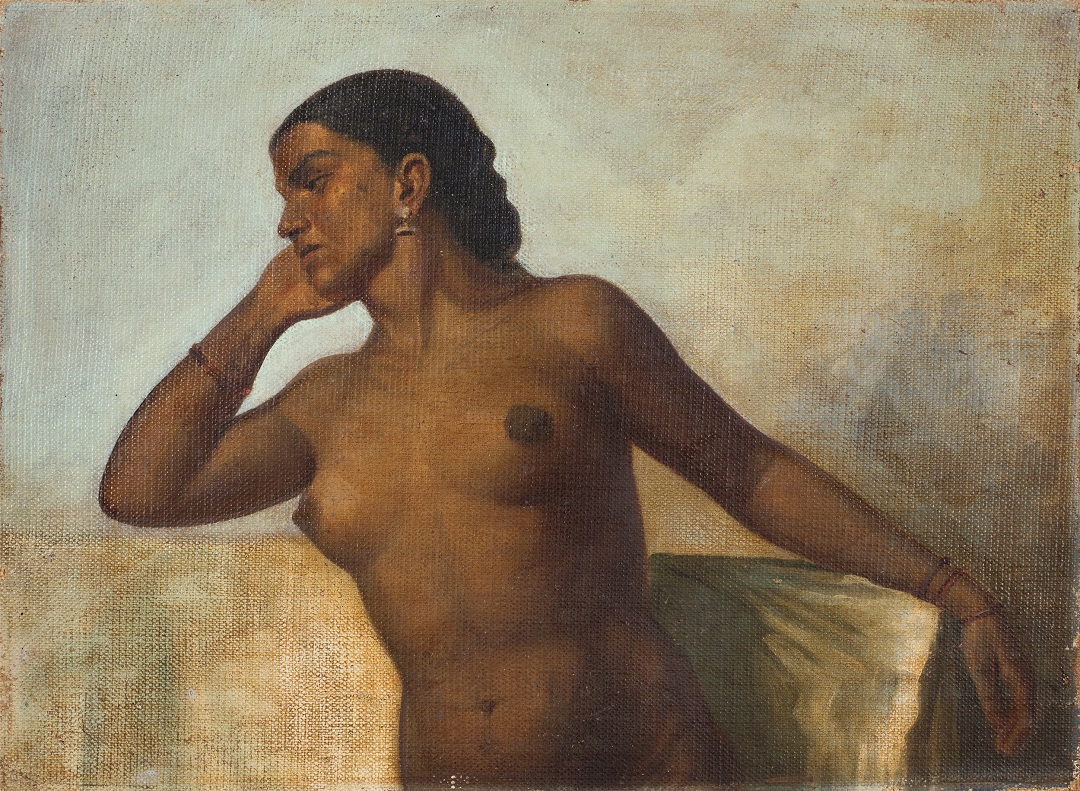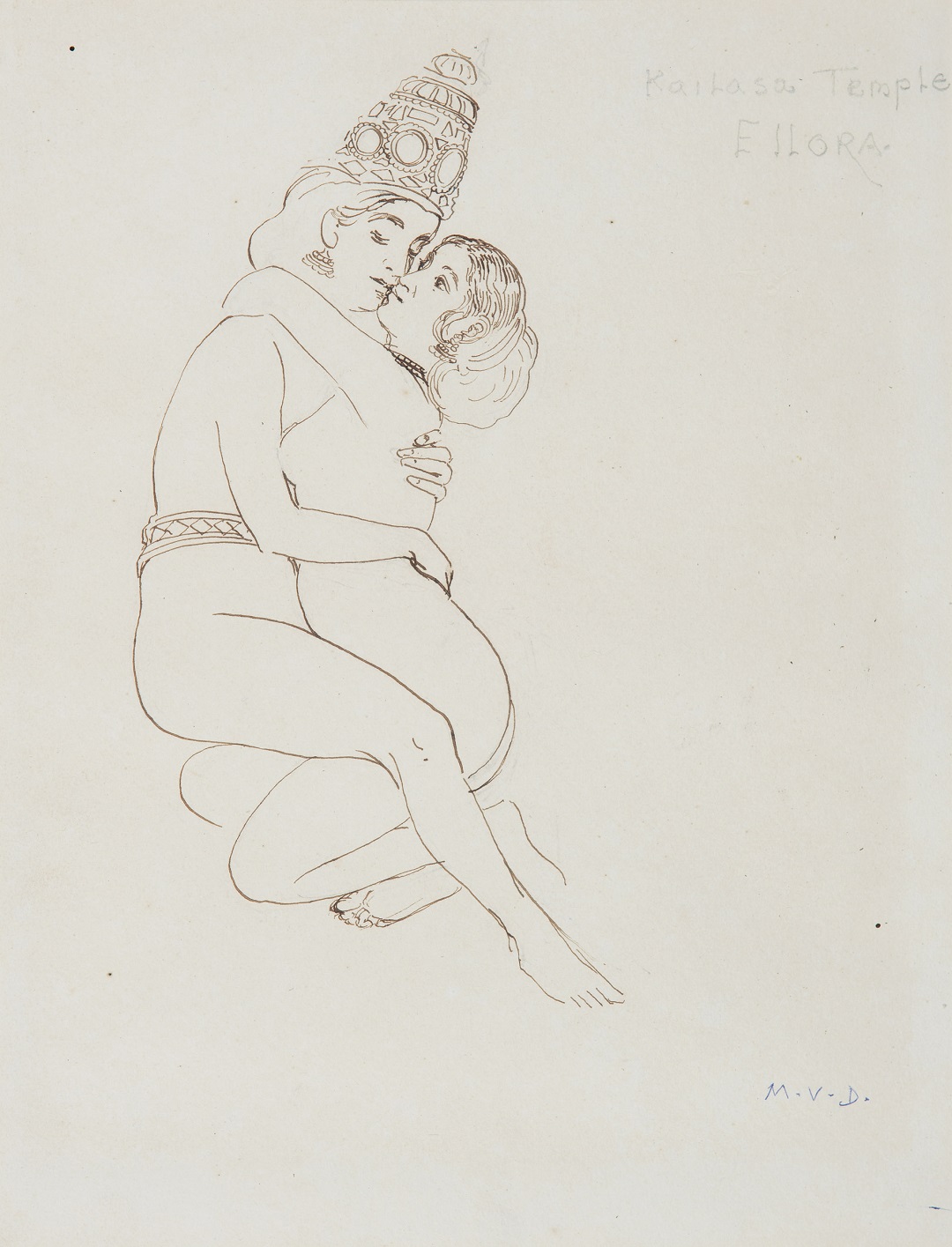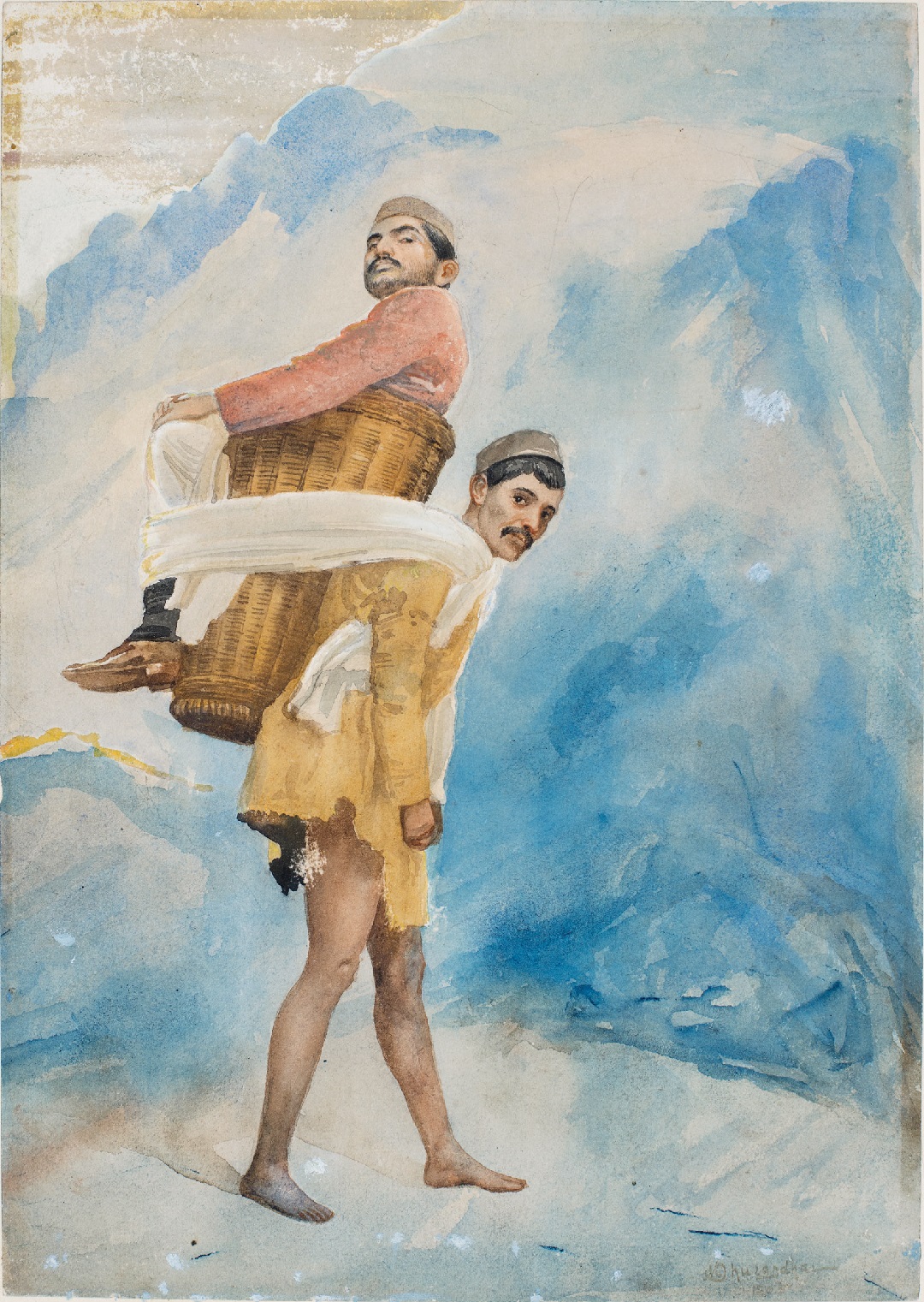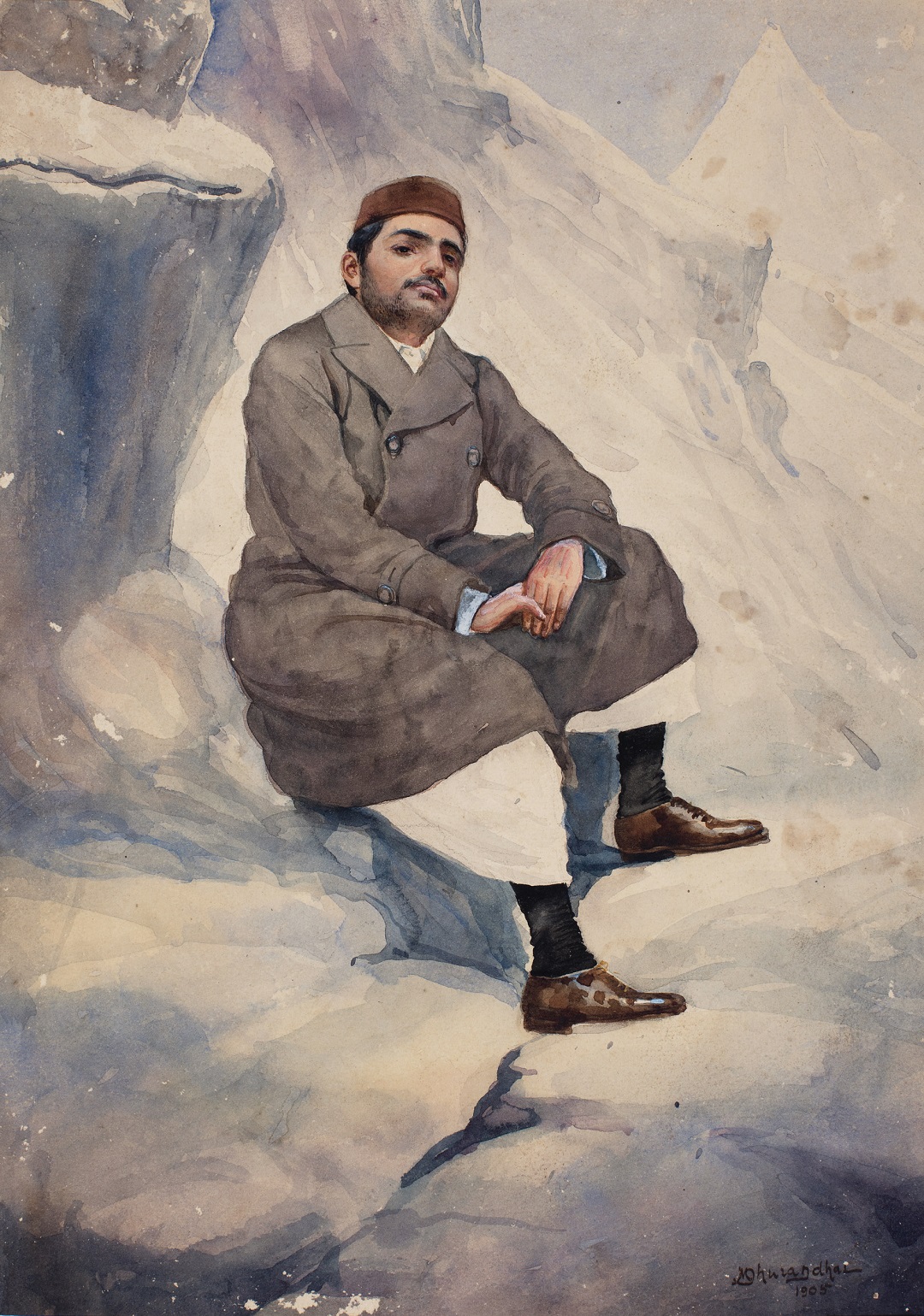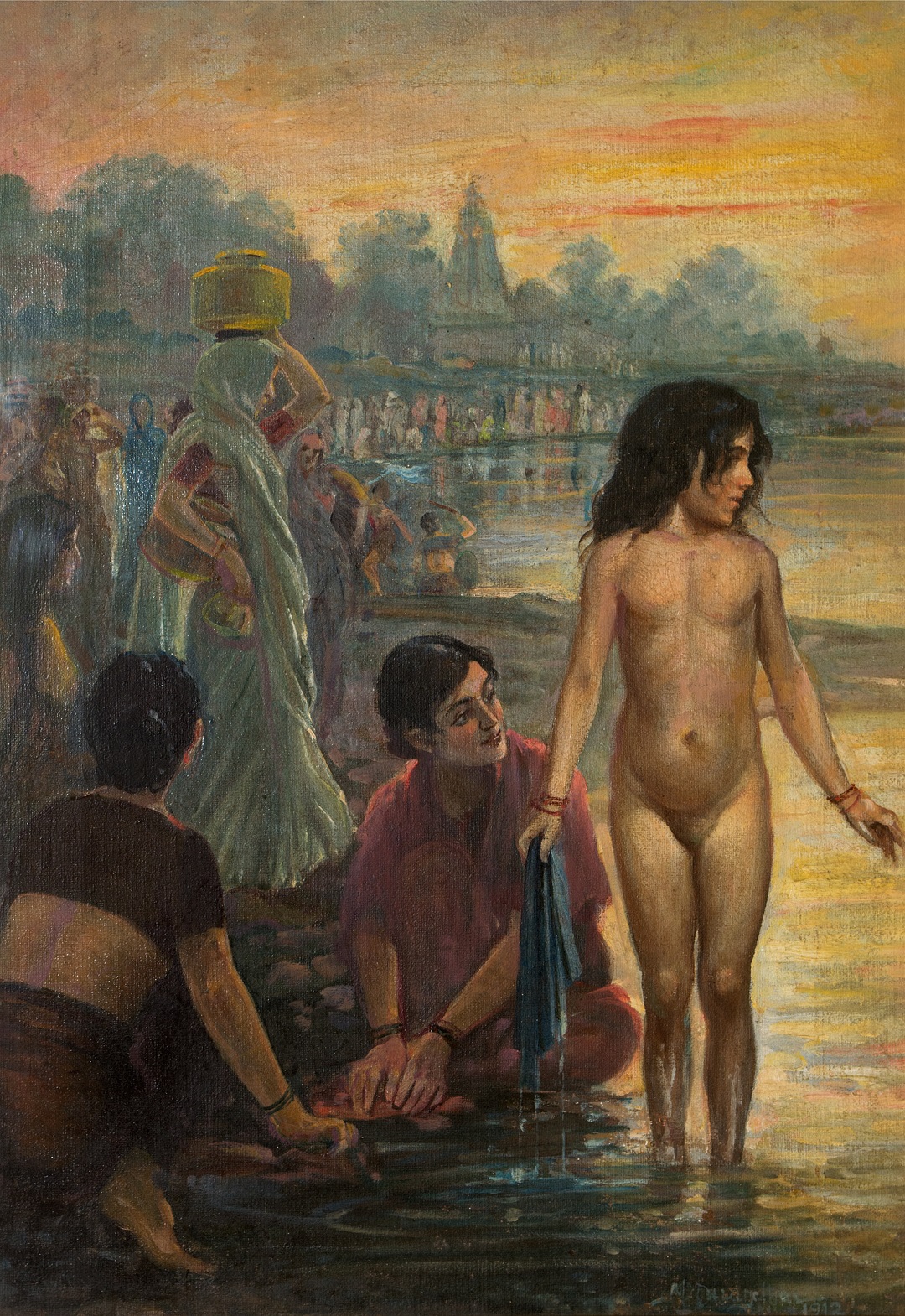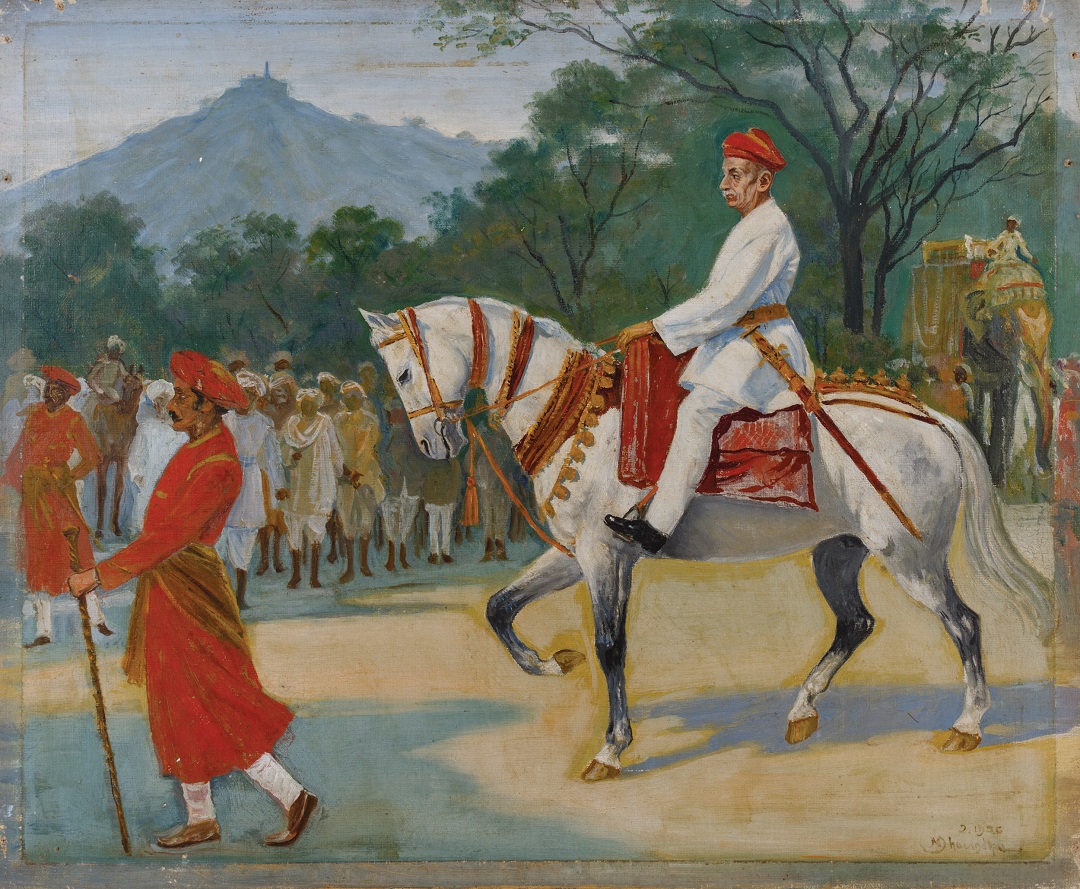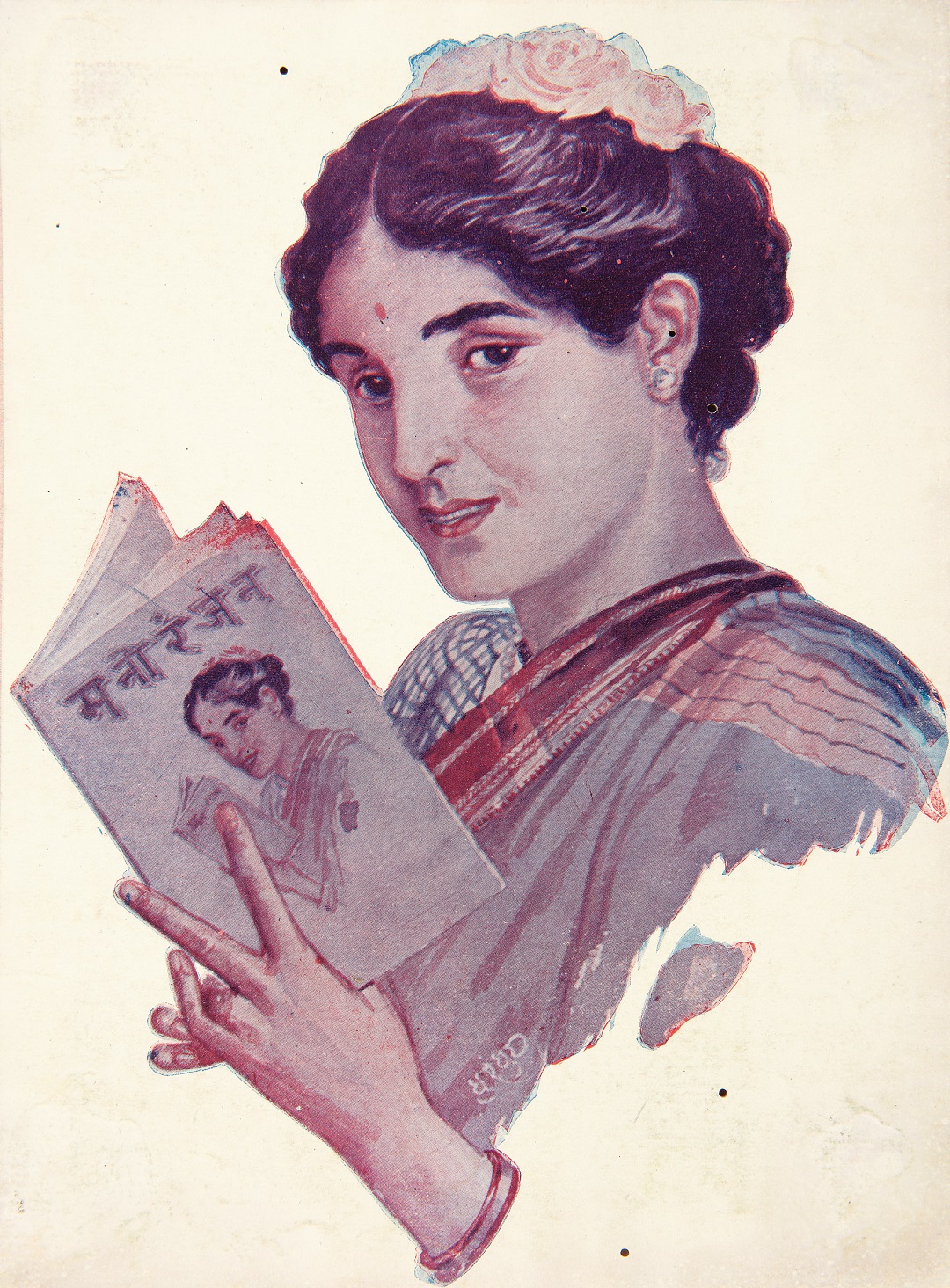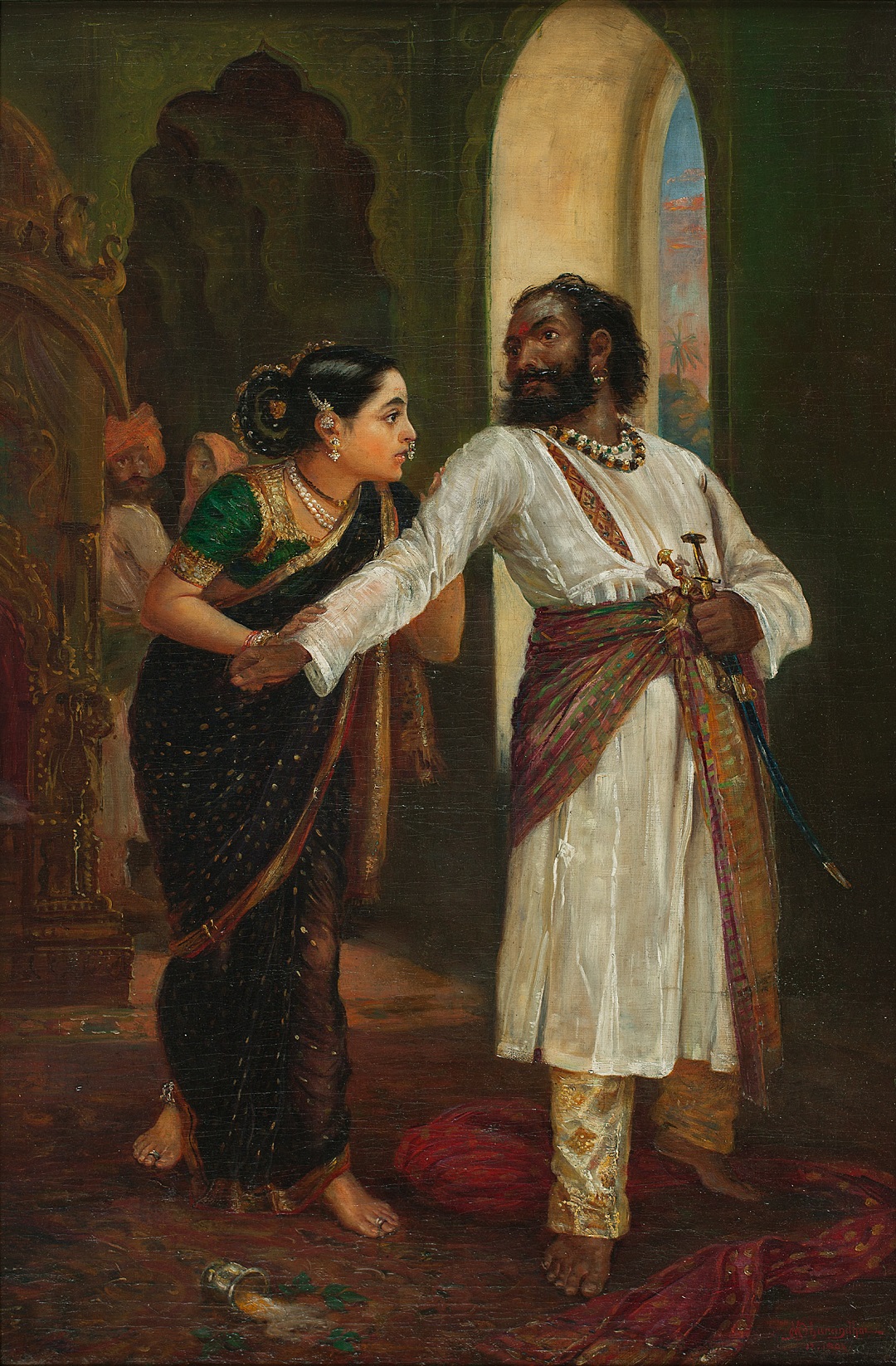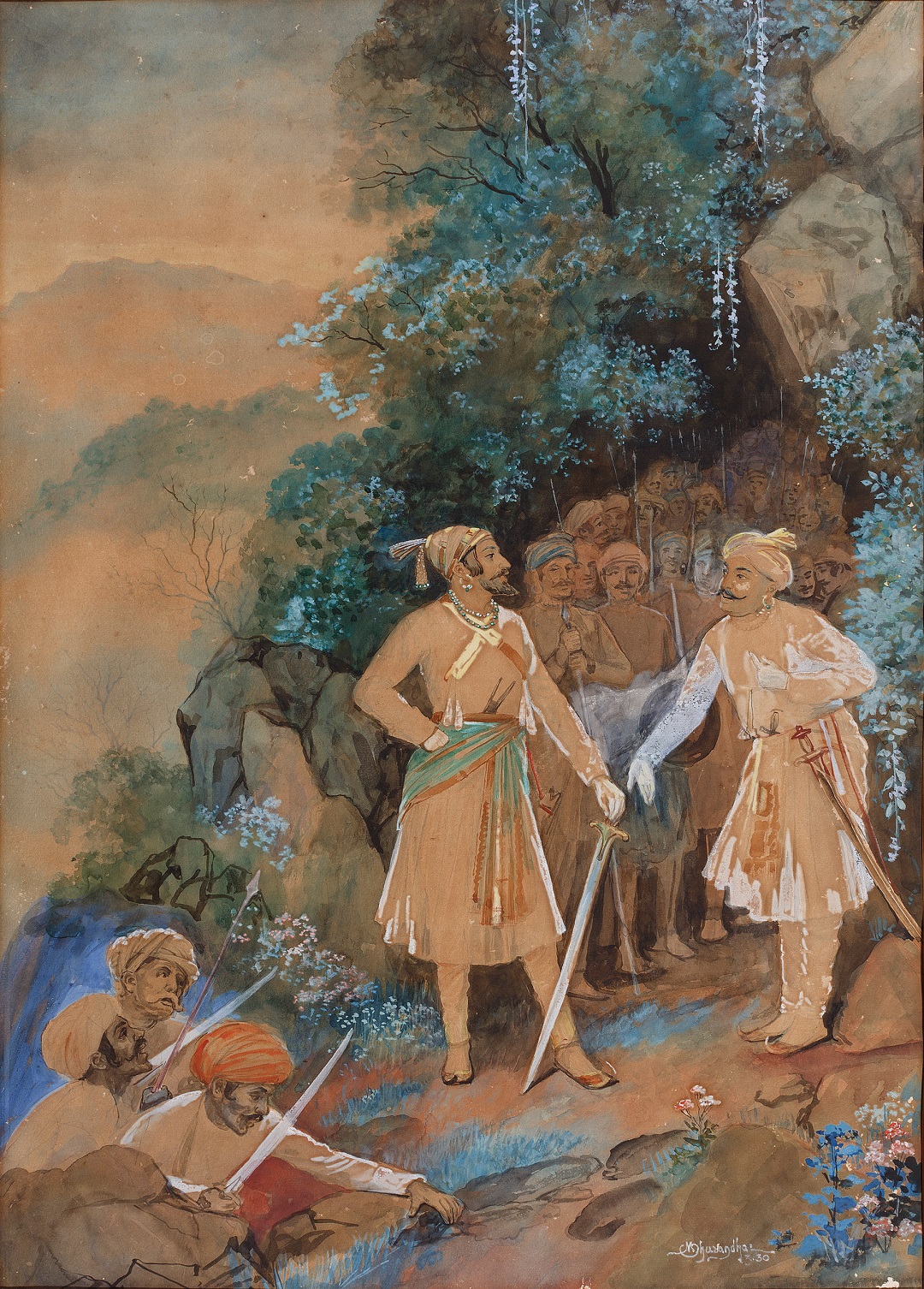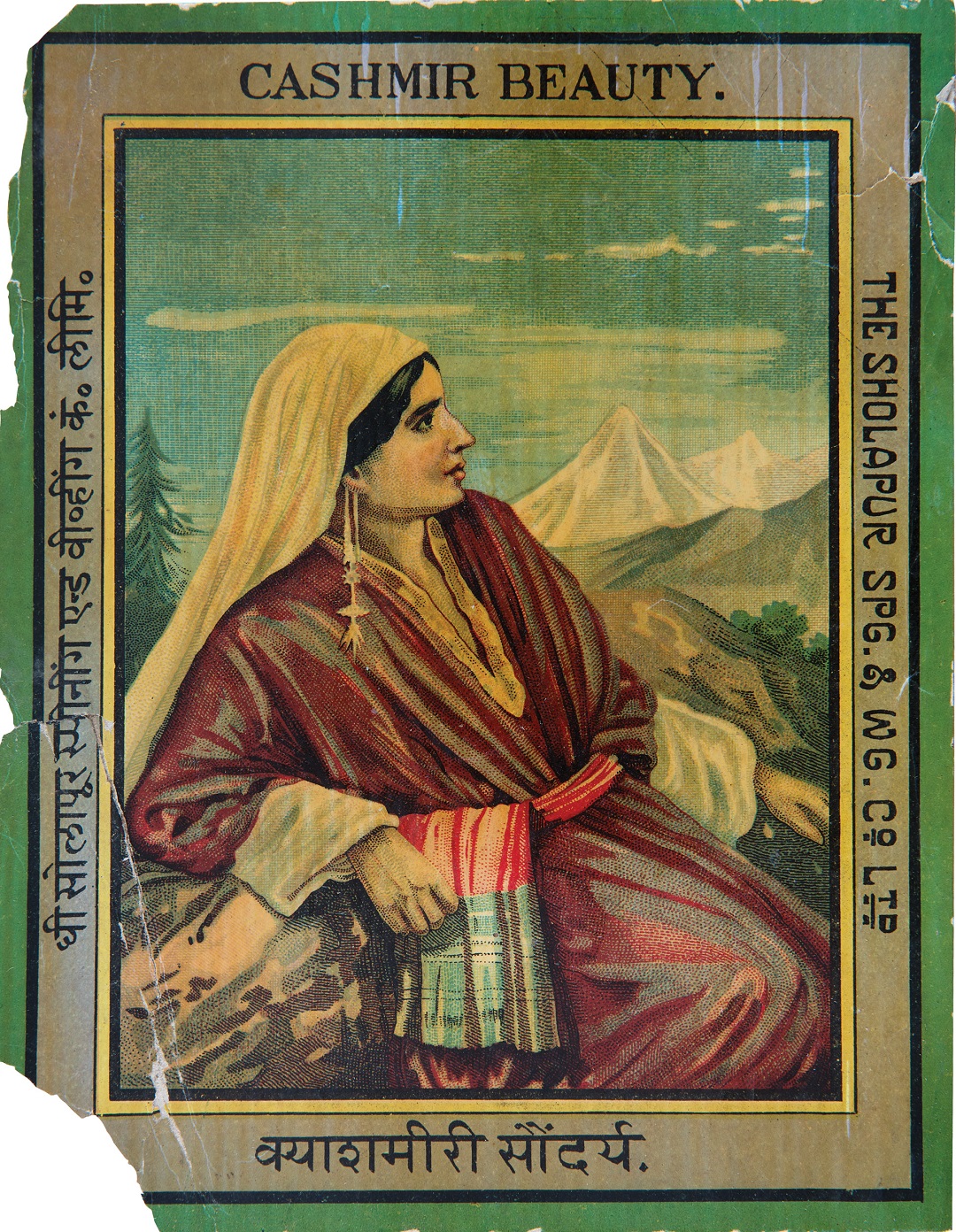M. V. DHURANDHAR: A RETROSPECTIVE
LINEAGES : PAST AND PRESENT
EARLY STUDIES
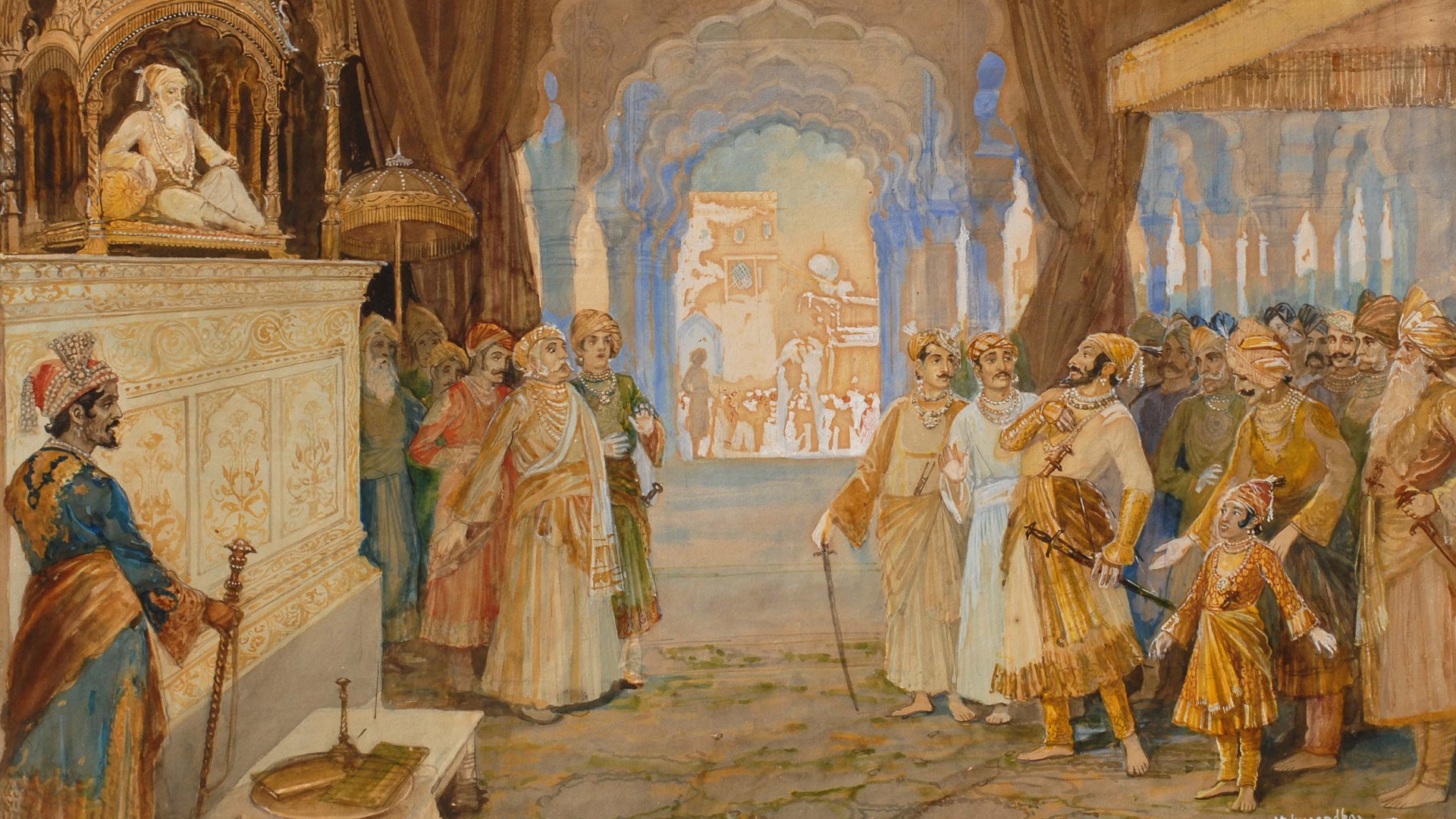
|
M. V. DHURANDHAR: A RETROSPECTIVE NATIONAL GALLERY OF MODERN ART Mumbai, 11 Sep – 13 Oct 2018 Exhibition by DAG M. V. DHURANDHAR Aurangzeb’s Court Water colour on paper Collection: Directorate of Archaeology and Museums, Government of Maharashtra (Shri Bhavani Museum and Library, Aundh, Satara) |
|
Few artists claim as rich and intriguing a legacy as M. V. Dhurandhar in the landscape of late 19th and early 20th century Indian art. His practice leaves us with challenging questions about encounters and exchanges with India's colonial past and the influence of Europeans in shaping the evolution of painting. This exhibition revisits Dhurandhar's vast oeuvre through DAG's extensive collection of his paintings, archival material and ephemera, in an attempt to understand the socio-cultural context of his emergence, and to re-examine his influence on institutional and commercial art in the country. |
|
M. V. DHURANDHAR Kamala Kant Ballajee Water colour on paper Collection: Private Collection |

M. V. Dhurandhar
Untitled (Self-Portrait)
Oil on canvas pasted on ply board
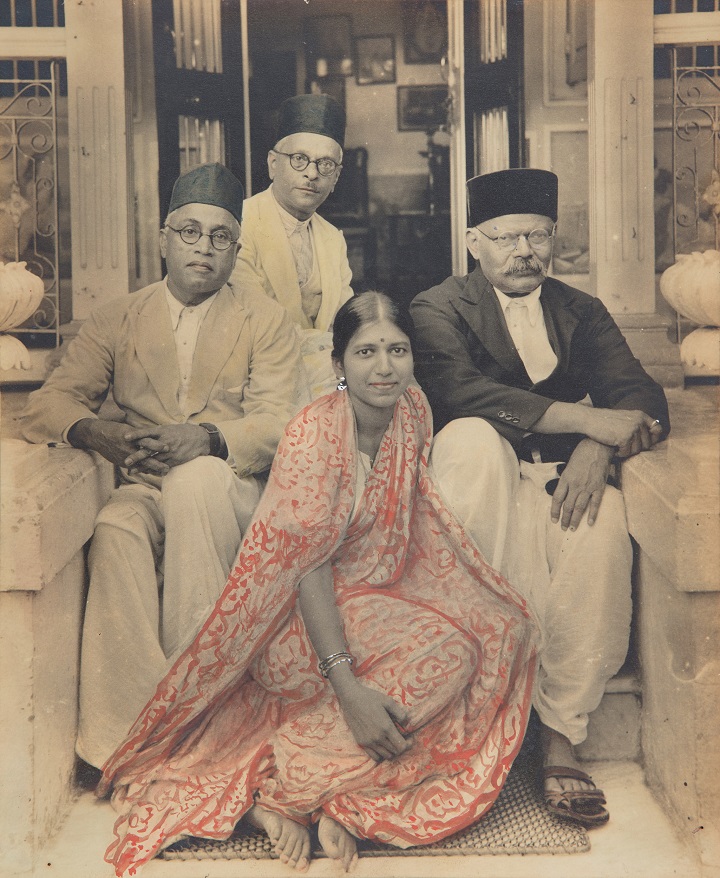
M. K. Parandekar (left) K. R. Talwadekar (second from left) with Dhurandhar and his daughter, Ambika
Seen here is one of the many self-portraits of M. V. Dhurandhar painted in the academic style. He would go on to develop the skill of portraiture over the course of his long and illustrious journey as an artist. Dhurandhar’s achievements began early. As a young student of Sir J. J. School of Art he entered two of his artworks at the prestigious The Bombay Art Society Exhibition. Presided over by the governor of Bombay. This exhibition was a grand affair and attracted important figures from the contemporary art world. |
M. V. Dhurandhar
Household Work
M. V. DHURANDHAR
Mother and Child
M. V. DHURANDHAR
Brides’ Maids or Scene of Hindu Marriage Ceremony
|
LINEAGES : PAST AND PRESENT Dhurandhar grew up in proximity to artists painting in the academic style like Abalall Rahiman who was his senior in school. The latter gained recognition by mastering this style and went on to join Sir J. J. School of Art. In college Dhurandhar was heavily influenced by his principal Sir John Griffith as well as the community of contemporary artists—most of them his direct classmates and seniors—who were fellow practitioners of academic realism. Following in the footsteps of famous painters like Raja Ravi Varma, Dhurandhar’s professional trajectory was shaped by the lucrative market for art produced in this style, which made both patronage and commercial opportunities easy to access. |
|
ABALALL RAHIMAN Untitled Sketch Sketch M. V. DHURANDHAR Head Study Charcoal on paper Collection: Sir J. J. School of Art, Mumbai |
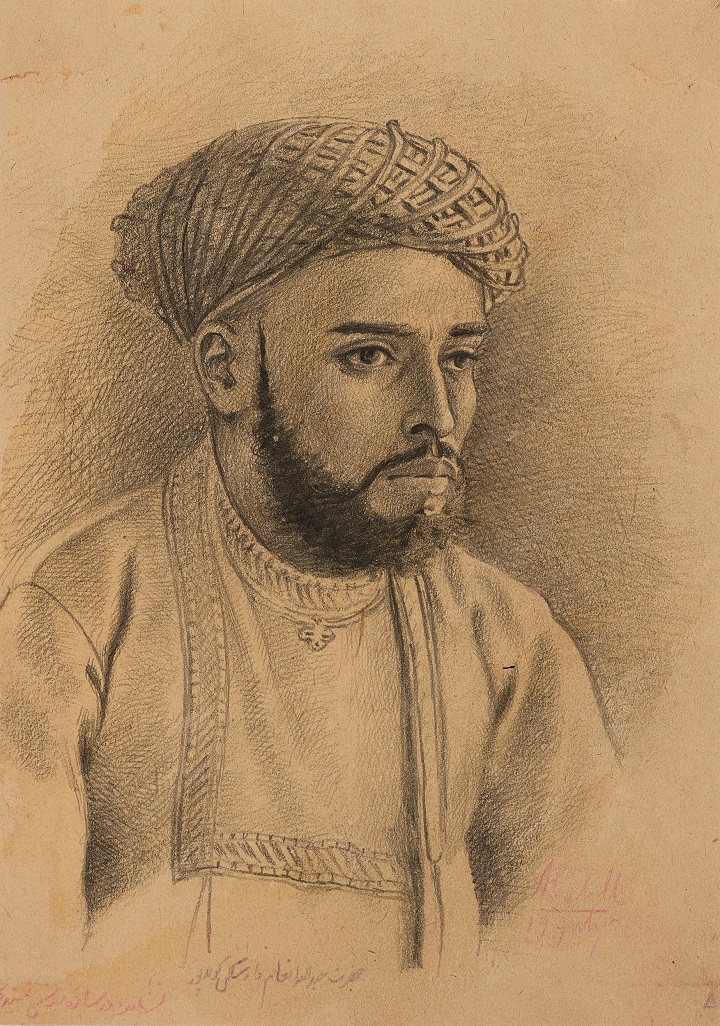
ABALALL RAHIMAN
Untitled
Oil on jute

ABALALL RAHIMAN
To The Temple
Watercolour on paper
Collection: Private Collection: Mumbai
Abalall was his senior in school and later, went on to join Sir J. J. School of Art. He became a household name in Kolhapur after winning a gold medal at the industrial exhibition sponsored by the British in Poona. Dhurandhar reminisces in his autobiography that he would often watch Abalall paint on the banks of Rankala lake. |
RAJA RAVI VARMA
Mohini Playing with a Ball
RAJA RAVI VARMA
Krishna Shishthai
RAJA RAVI VARMA
Portrait of a Gentleman
A. X. TRINDADE
Portrait of Esther
L. N. TASKAR
Untitled
A. H. MULLER
Untitled
M. F. PITHAWALLA
Untitled
Dhurandhar’s contemporaries shaped his style as much as his masters did. He was surrounded by a community of artists—A. X. Trindade, T. H. Muller and M. F. Pithawalla—who practised and perfected a similar style, rooted in their western academic training.
|
EARLY STUDIES "The student gets well versed in all subjects as he completes this tough course. A student who has passed the third grade could easily do any shading in a single or multiple colours." Dhurandhar was about 22 years old when he joined Sir J. J. School of Art. Even though he maintained a peerless academic record, the courses offered often tested his ability to adapt to various media. He was taught in all the available media and some of his early studies show the sheer versatility of his craft. Principal John Griffth and Vice Principal E. Greenwood were his primary trainers and Griffth’s style, technique and subjects influenced Dhurandhar’s vision significantly. |
|
M. V. DHURANDHAR Roopmati Mosque Ahmedabad Water colour on paper Collection: Sir J. J. School of Art, Mumbai |
M. V. DHURANDHAR
Untitled (Antique Study)
M. V. DHURANDHAR
Do You Come Lakshmi
M. V. DHURANDHAR
Untitled
M. V. DHURANDHAR
Untitled (Still-Life)
M. V. DHURANDHAR
Untitled
|
PORTRAITS AND HUMAN FIGURES The economy of patronage gave huge impetus to portraiture as a popular genre as artists perfected the art of capturing their patrons in the available symbols of power. Most of Dhurandhar’s contemporaries were avid practitioners of portraiture but the faces Dhurandhar captured truly stand out. They combine his attention to expressive details and his passion for capturing moments of human drama which he went on to explore in paintings of large social gatherings. |
|
M. V. DHURANDHAR Untitled Charcoal on paper |
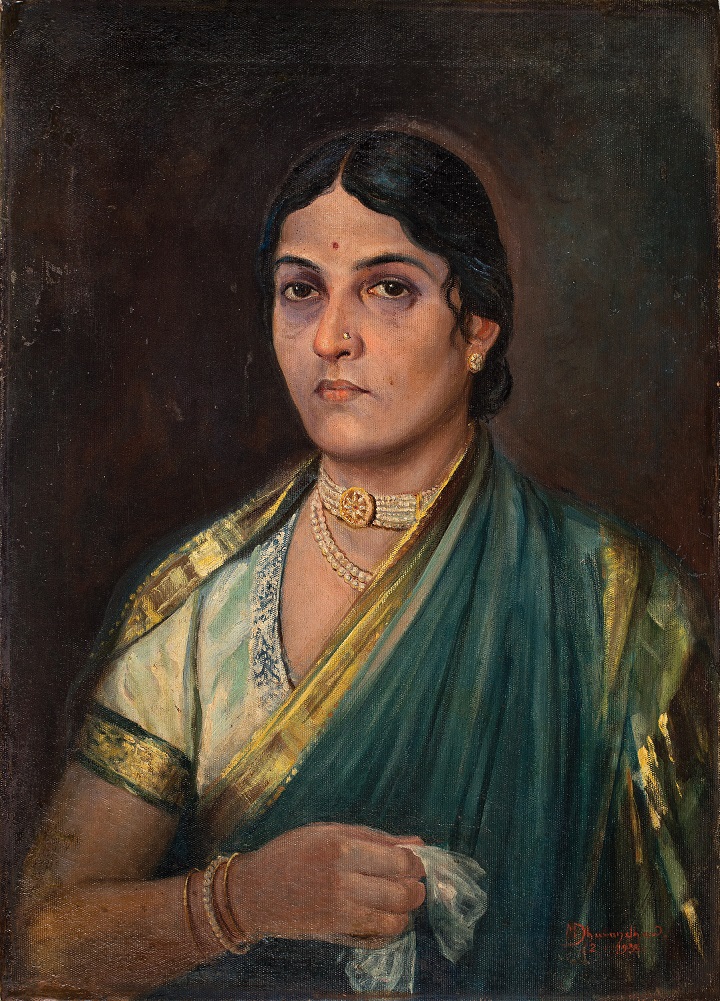
M. V. DHURANDHAR
Untitled
Oil on canvas
Collection: Private Collection, New Delhi
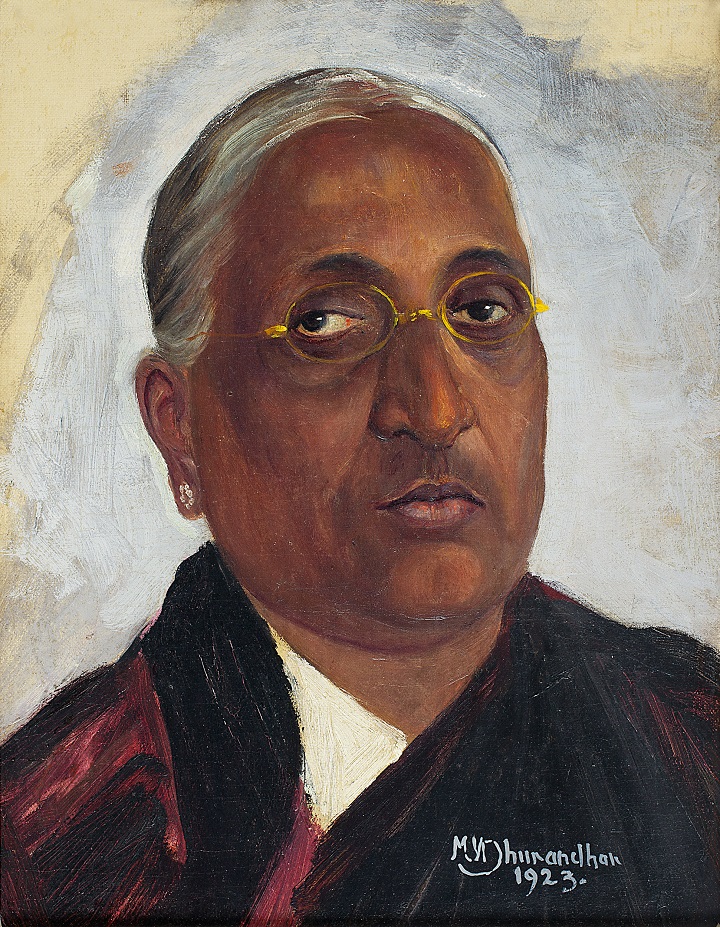
M. V. DHURANDHAR
Untitled
Oil on canvas
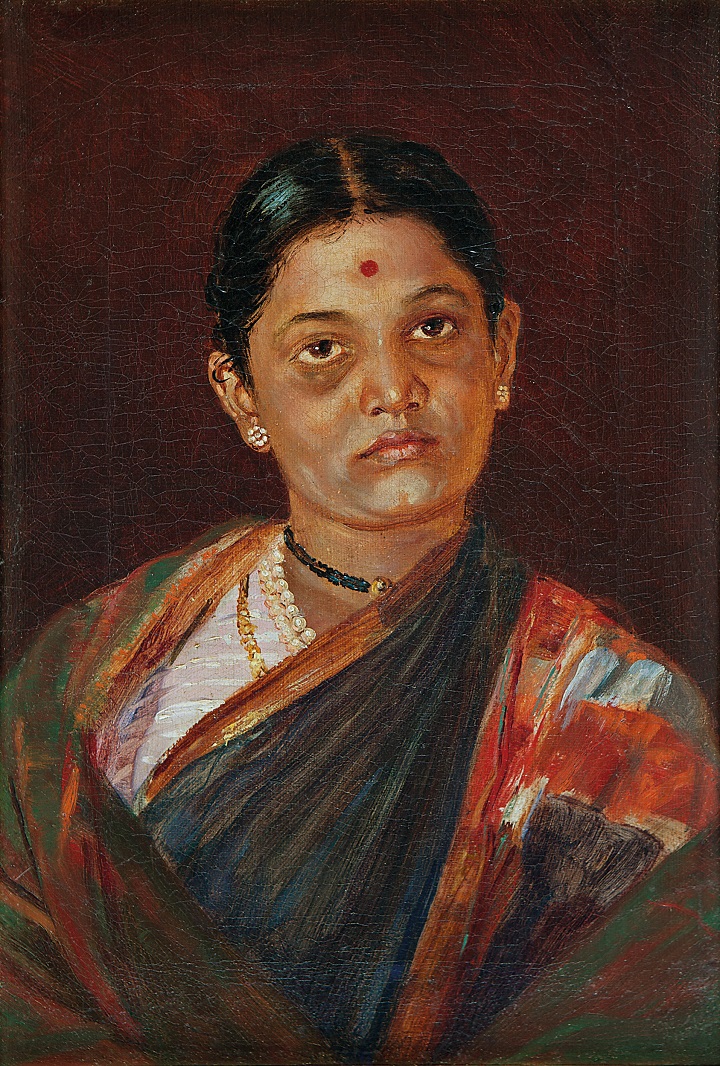
M. V. DHURANDHAR
Portrait Of the Artist’s Wife
Oil on canvas
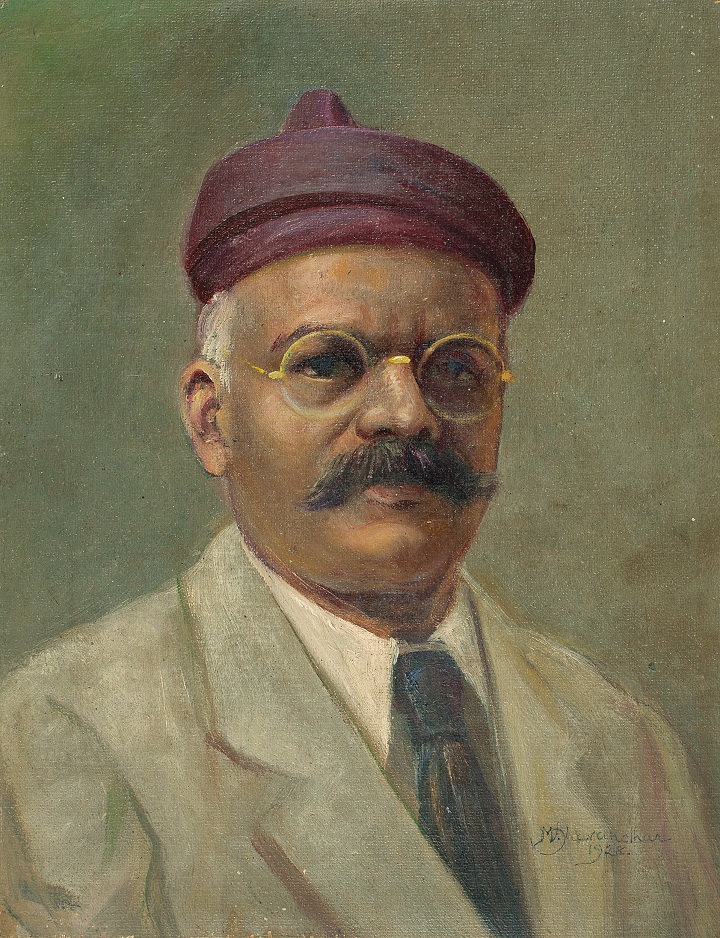
M. V. DHURANDHAR
Untitled (Self-Portrait)
Oil on canvas pasted on board
Dhurandhar engaged intimately with the moods and expressions of those close to him. A larger number of his portraits bring alive this close network of friends and family members. He painted himself regularly over the years. These self-portraits allow us to observe the evolution of his style as a painter, and the way he projected his own image—through his clothing and demeanour—across the decades. |
M. V. DHURANDHAR
Untitled
M. V. DHURANDHAR
My Wife in Art (A Series of 175 Sketches)
M. V. DHURANDHAR
Kailash Temple Ellora
|
‘MY WIFE IN ART’ Dhurandhar’s attention to the intricacies of human moods and expressions is perhaps best documented in the numerous sketches and paintings of his wife. Dhurandhar lost his first wife Bapubai to the plague in 1895. Waiting beside her corpse, he drew her for the last time as Bapubai’s father left to make arrangements for the funeral. Towards the end of his life, he collected all the sketches into a series. |
|
M. V. DHURANDHAR My Wife in Art (A Series of 175 Sketches) Ink, graphite hand tinted photographs and water colour on paper |
M. V. DHURANDHAR
My Wife in Art (A Series of 175 Sketches)
M. V. DHURANDHAR
My Wife in Art (A Series of 175 Sketches)
M. V. DHURANDHAR
My Wife in Art (A Series of 175 Sketches)
Dhurandhar’s intimate sketches of his second wife Gangubai also display a remarkable aspect of his personal life. Departing from the norm, he chose to make his wife his constant companion, included her in his social circuit and filled pages with informal sketches of his life with her. Later, he collected these sketches and built an archive of these portraits of intimacy.
|
CHRONICLING SOCIETY Drawn towards the portrayal of human behaviour, Dhurandhar’s stylistic training lent itself perfectly to grand scapes of social gatherings. He chronicles events in the city of Bombay—imperial visits, royal pilgrimages, scenes from the crowded marketplace, railway stations and law courts. Each scene pays attention to minute details of body language, clothing and expression. |
|
M. V. DHURANDHAR Newly Wedded Hindu Girl Oil on canvas Collection: Directorate of Archeology and Museums
|
M. V. DHURANDHAR
Untitled (Pilgrimage of Sheth Purushottam Vishram Mavji to Vaishnodevi)
M. V. DHURANDHAR
Untitled (Pilgrimage of Sheth Purushottam Vishram Mavji to Vaishnodevi)
M. V. DHURANDHAR
Untitled (Pilgrimage of Sheth Purushottam Vishram Mavji to Vaishnodevi)
M. V. DHURANDHAR
Nasik Ghat
M. V. DHURANDHAR
Shrikant Balasaheb Maharaj
M. V. DHURANDHAR
A Tailor Couple
|
THE COMMERCIAL ARTIST Dhurandhar took full opportunity of the advances in printing technologies and had a thriving parallel career as a popular illustrator. But this move was part of a larger phenomenon where artists produced frequently for the marketplace, responding to popular demands. The popularity of the Ravi Varma Press enabled a larger public to access copies of artworks through lithograph prints and oleographs. |
|
M. V. DHURANDHAR Krishna with Gopis Oleograph Collection: National Gallery of Modern Art, New Delhi |
M. V. DHURANDHAR
Digital reproduction of a magazine cover
M. V. DHURANDHAR
Untitled
M. V. DHURANDHAR
Pawan Khind
M. V. DHURANDHAR
M. V. DHURANDHAR
M. V. DHURANDHAR
Dhurandhar became a household name as his illustrations appeared on advertisements, postcards, book covers and diverse other commercial media.
|
ARTIST OF THE RAJ Dhurandhar’s professional journey spans the decades when artists were increasingly searching for ways to respond to the British occupation of India. In this context, his sustained collaboration with the government on multiple projects of civic beautification makes his location in history fraught and uneasy. How we read his legacy might remain a difficult historical question. But these collaborations produced murals which brought out the best of Dhurandhar—his ability to recreate the intricacies of human action. The murals at the Imperial Secretariat teems with people from all walks of life. |
|
M. V. DHURANDHAR Imperial Secretariat Murals New Delhi |
|
LEGACY Dhurandhar’s daughter Ambika carried forward her father’s legacy. The first woman to pass out with a diploma from Sir J. J. School of Art, she went on to exhibit widely in Europe and other parts of the West. |
|
AMBIKA DHURANDHAR Untitled Oil on canvas pasted on cloth and pasted on cardboard |
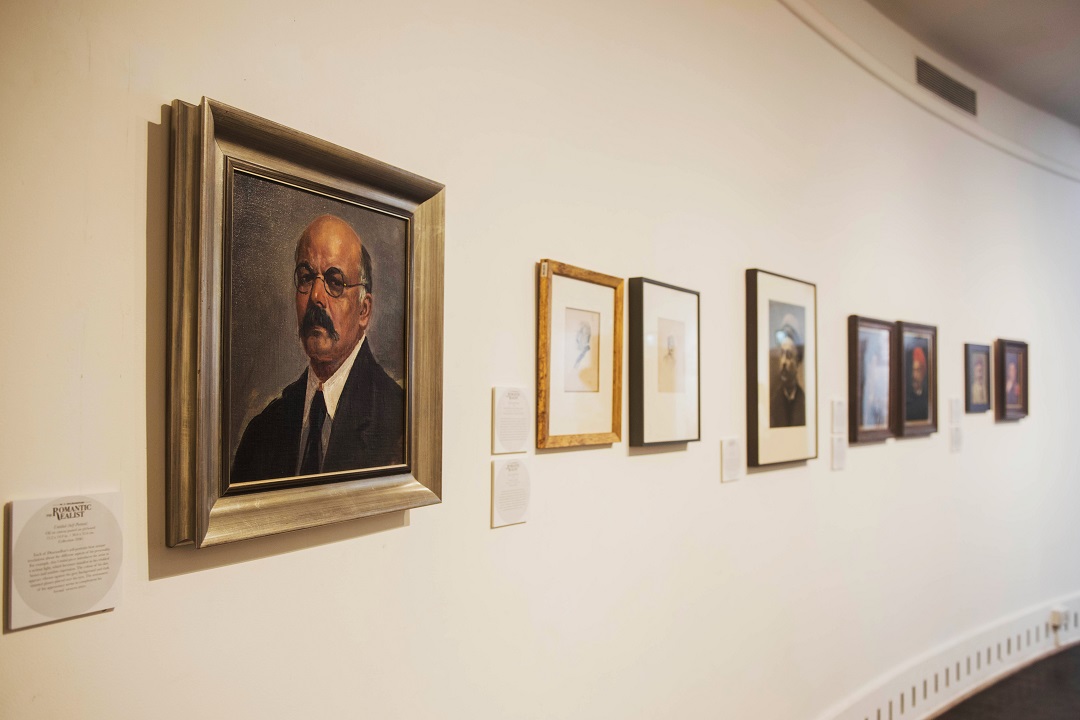
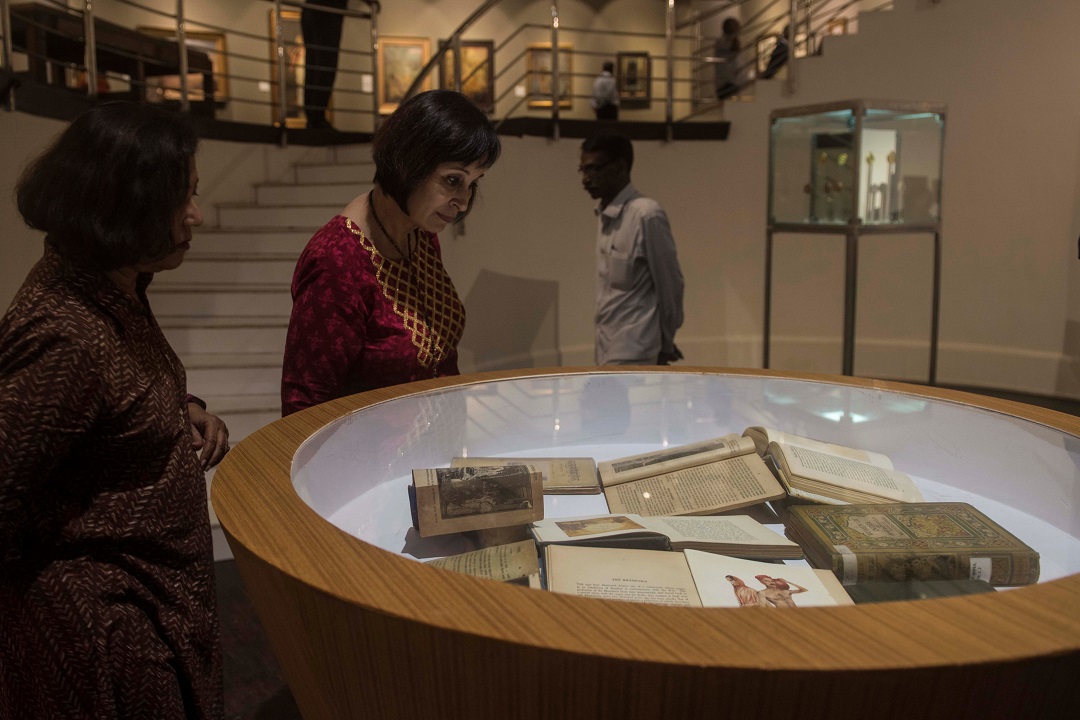
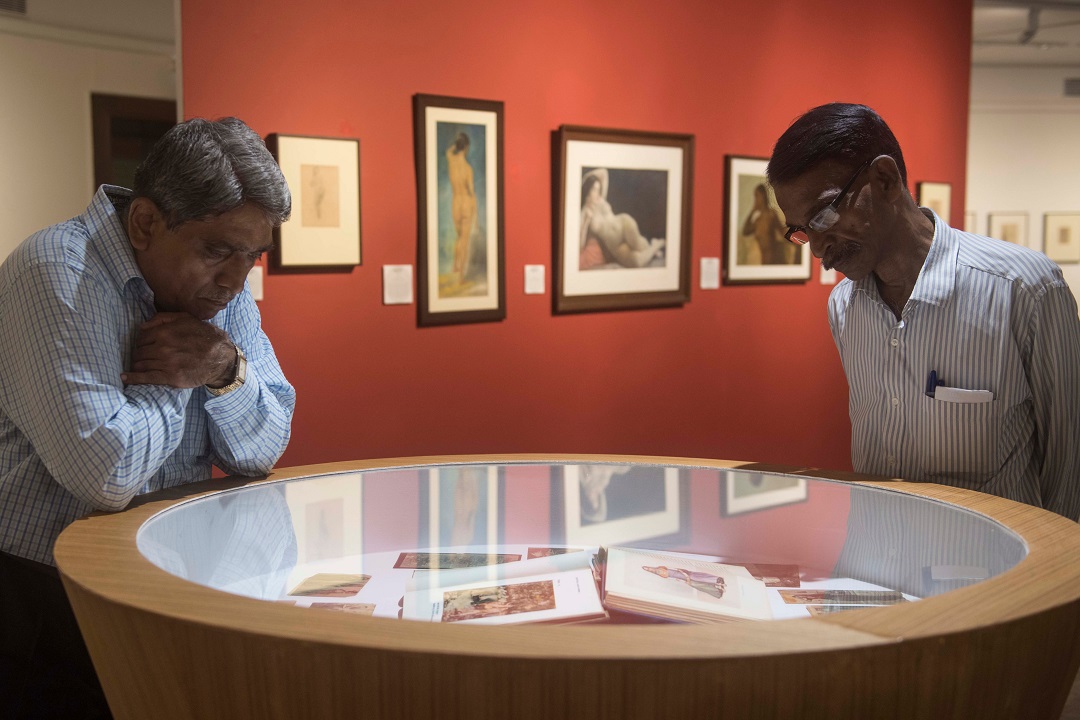
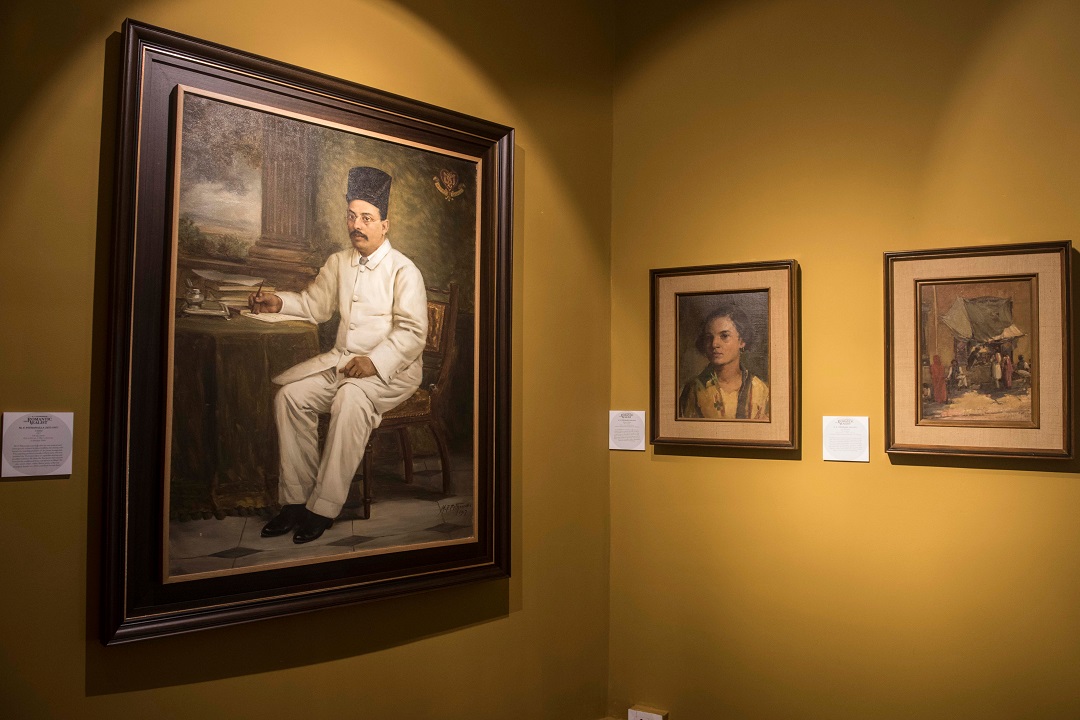
|
'The paintings reveal his mastery is depicting light and shadow and crowding his paintings with people, each with distinct features and body language.' 'Revisit the art of 19th century master MV Dhurandhar', Hindusthan Times, 8 September 2018 'The quality of Dhurandhar's work speaks for itself. His sketches are practically photographic in their realism, though Dhurandhar isn't one to shy away from a little artistic license here and there, either.' 'In Defence of Realism: Delving into the work of MV Dhurandhar', Architectural Digest, 1 October 2018 |

Presented by

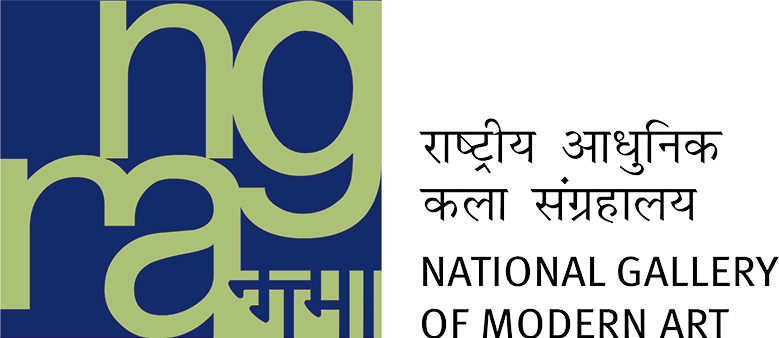
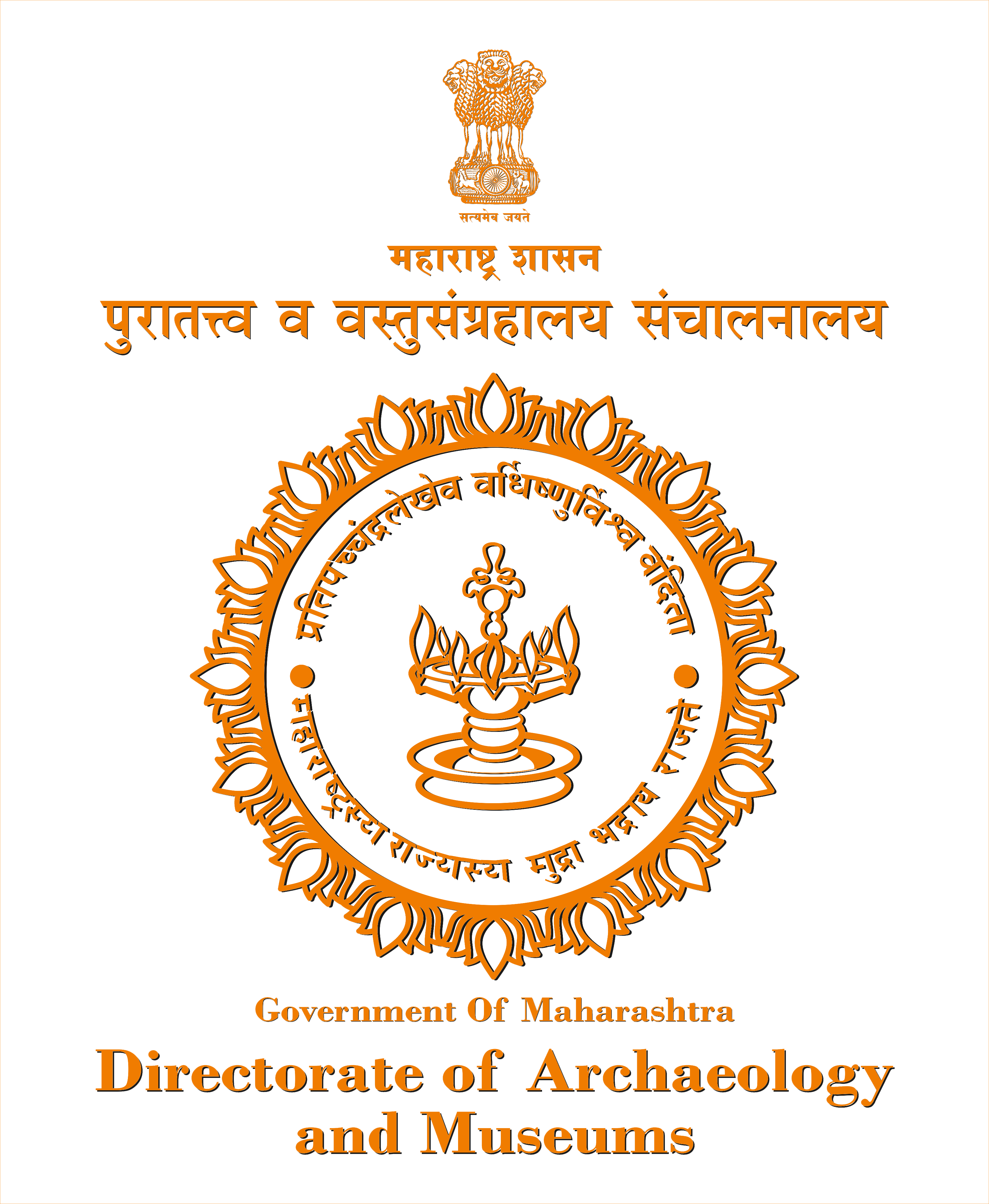

In association with
